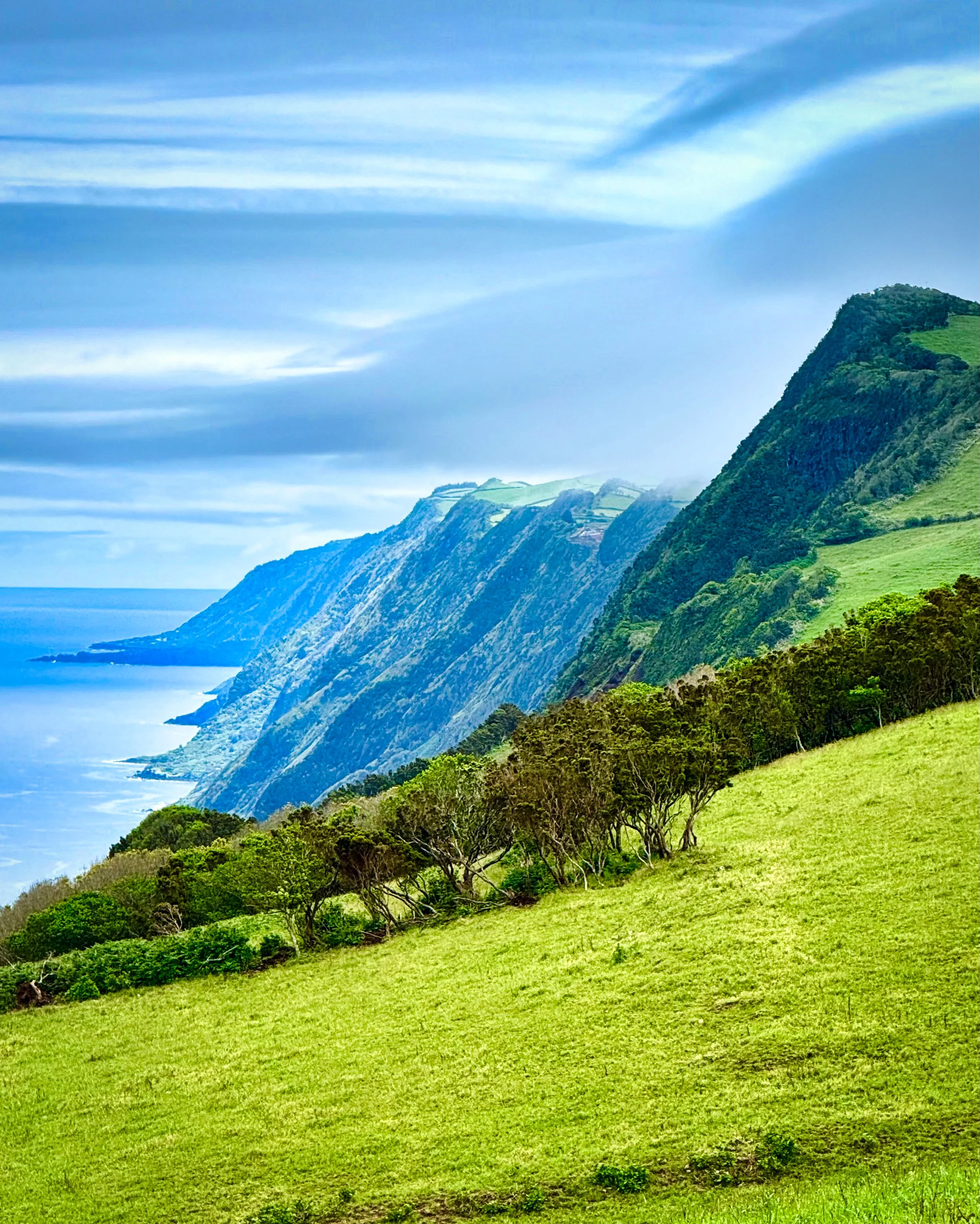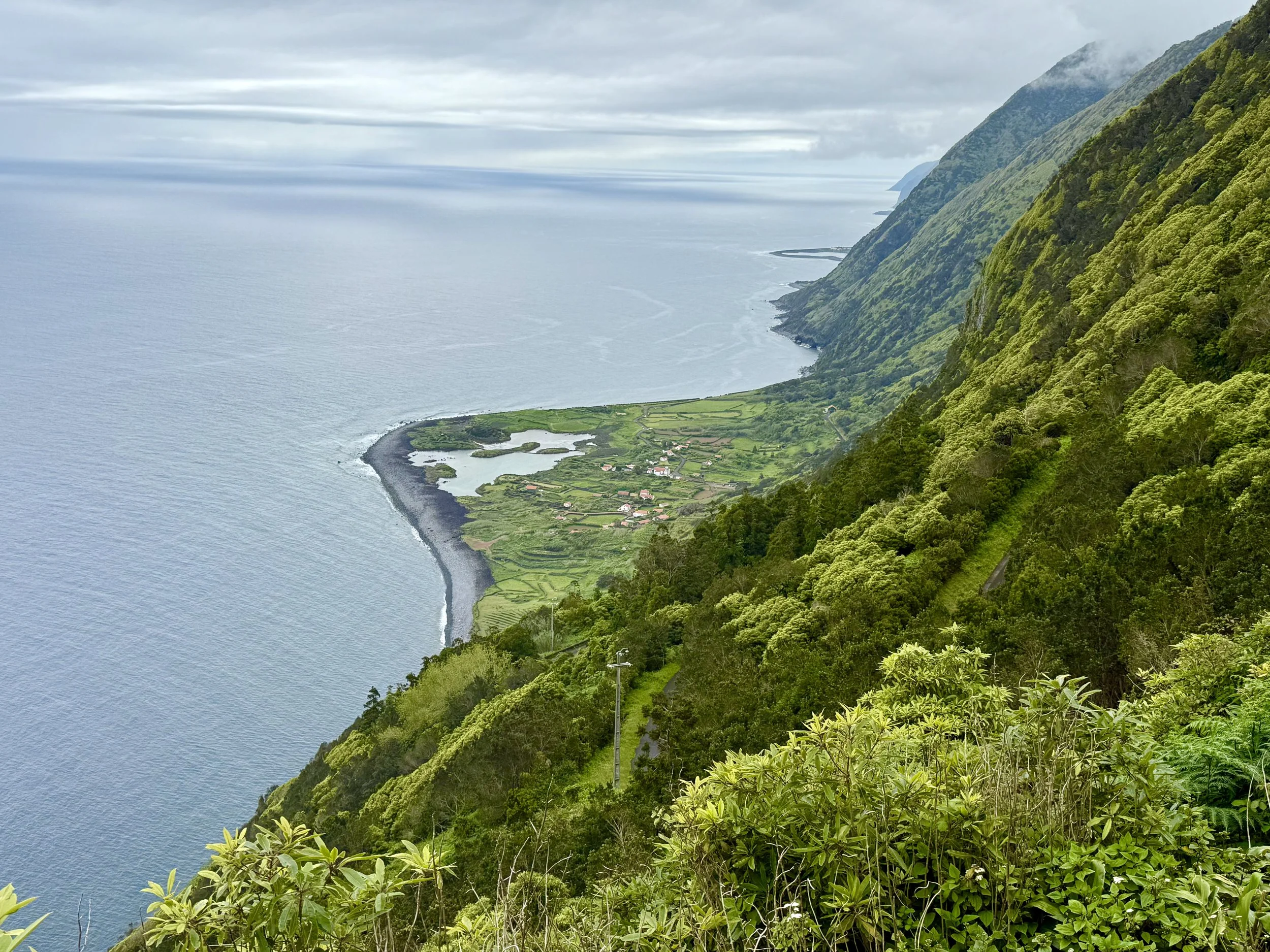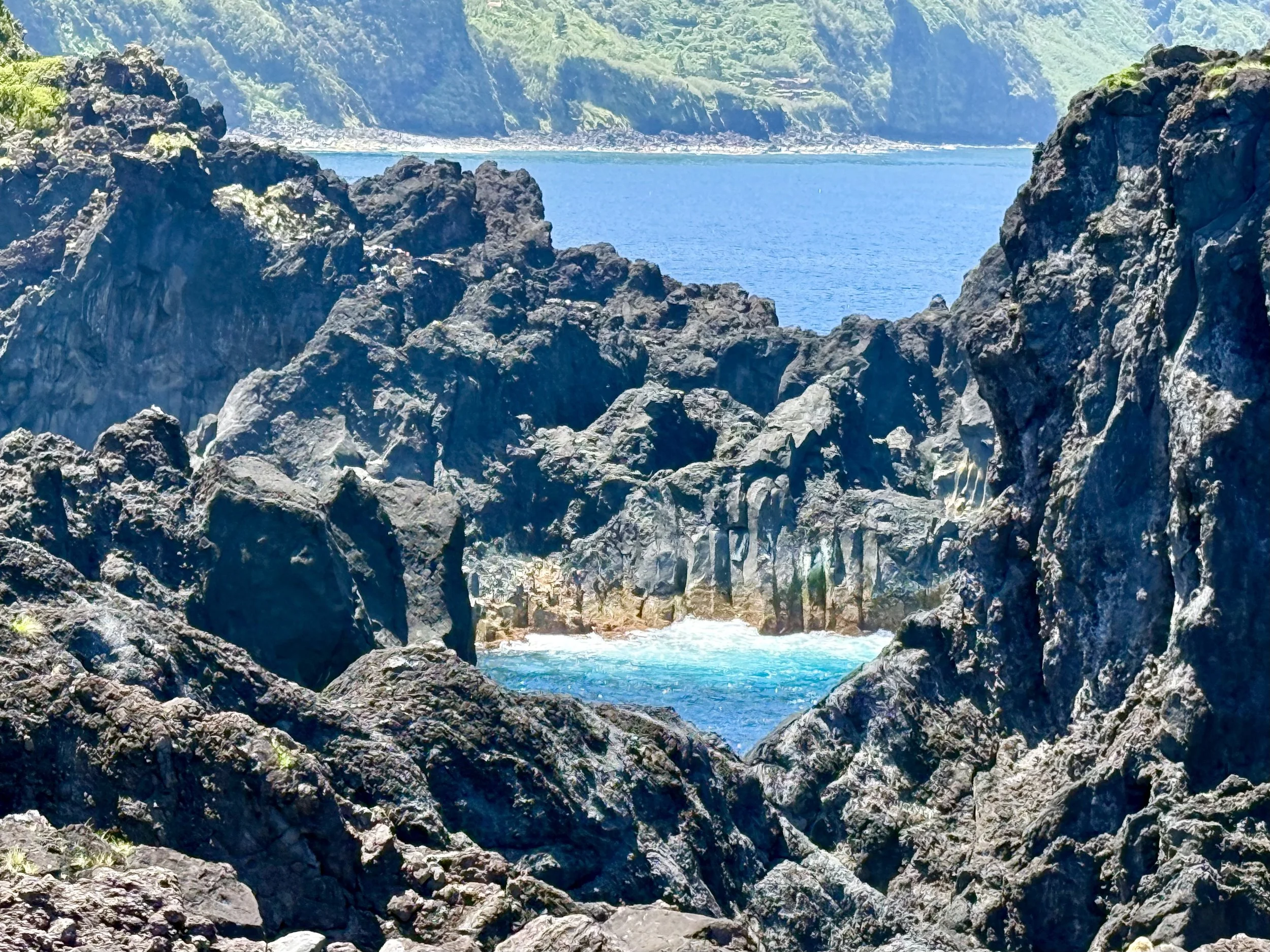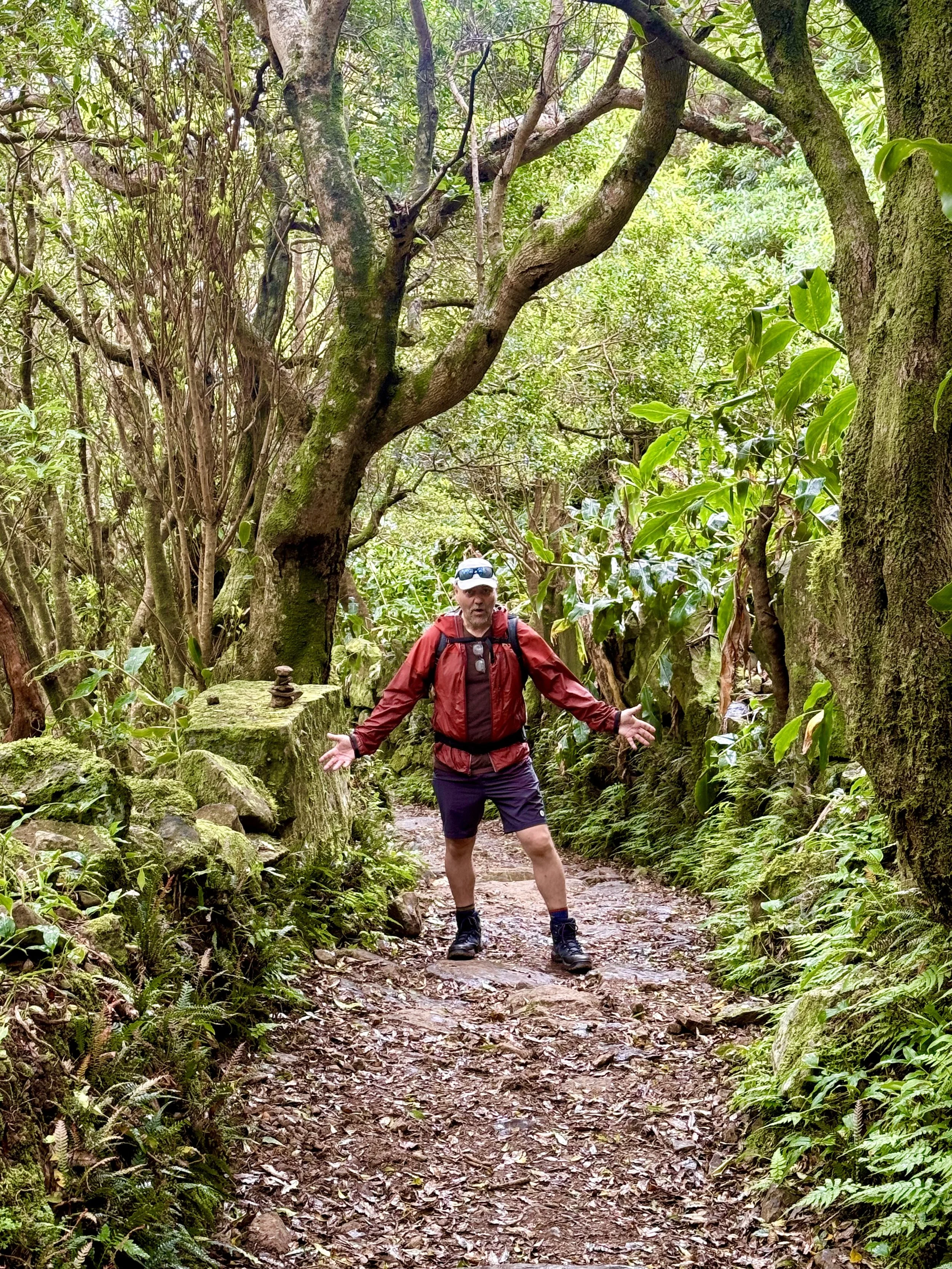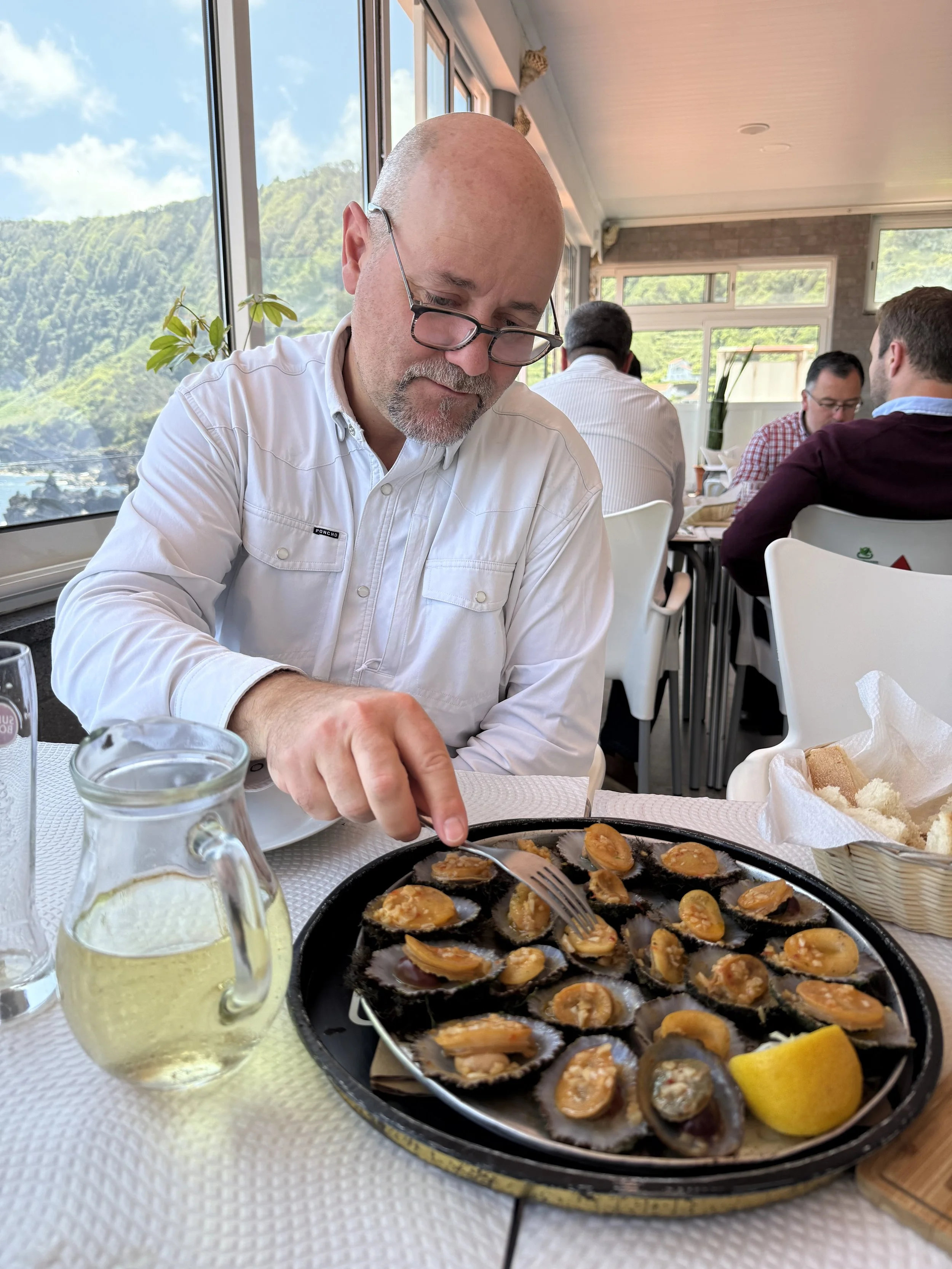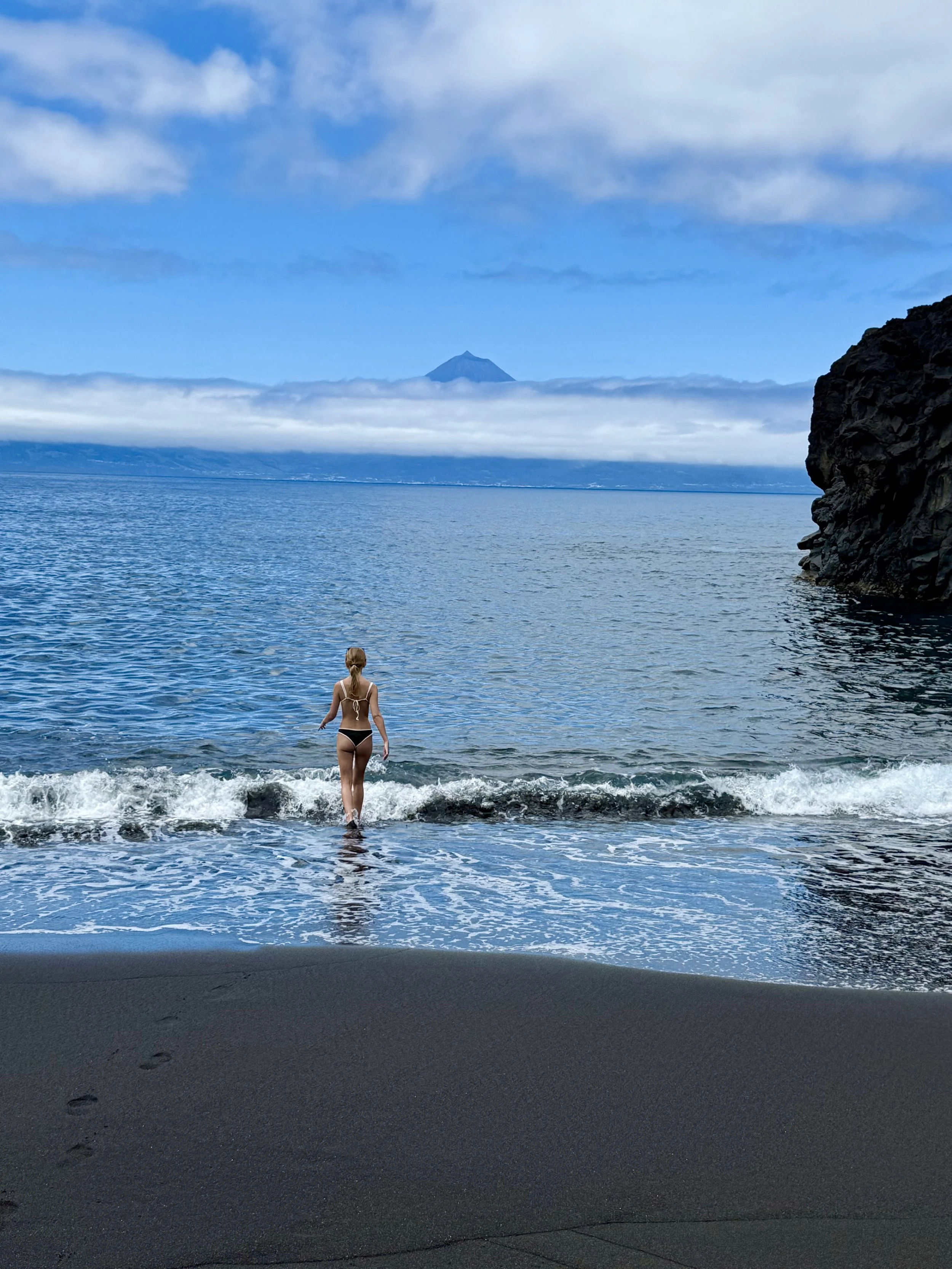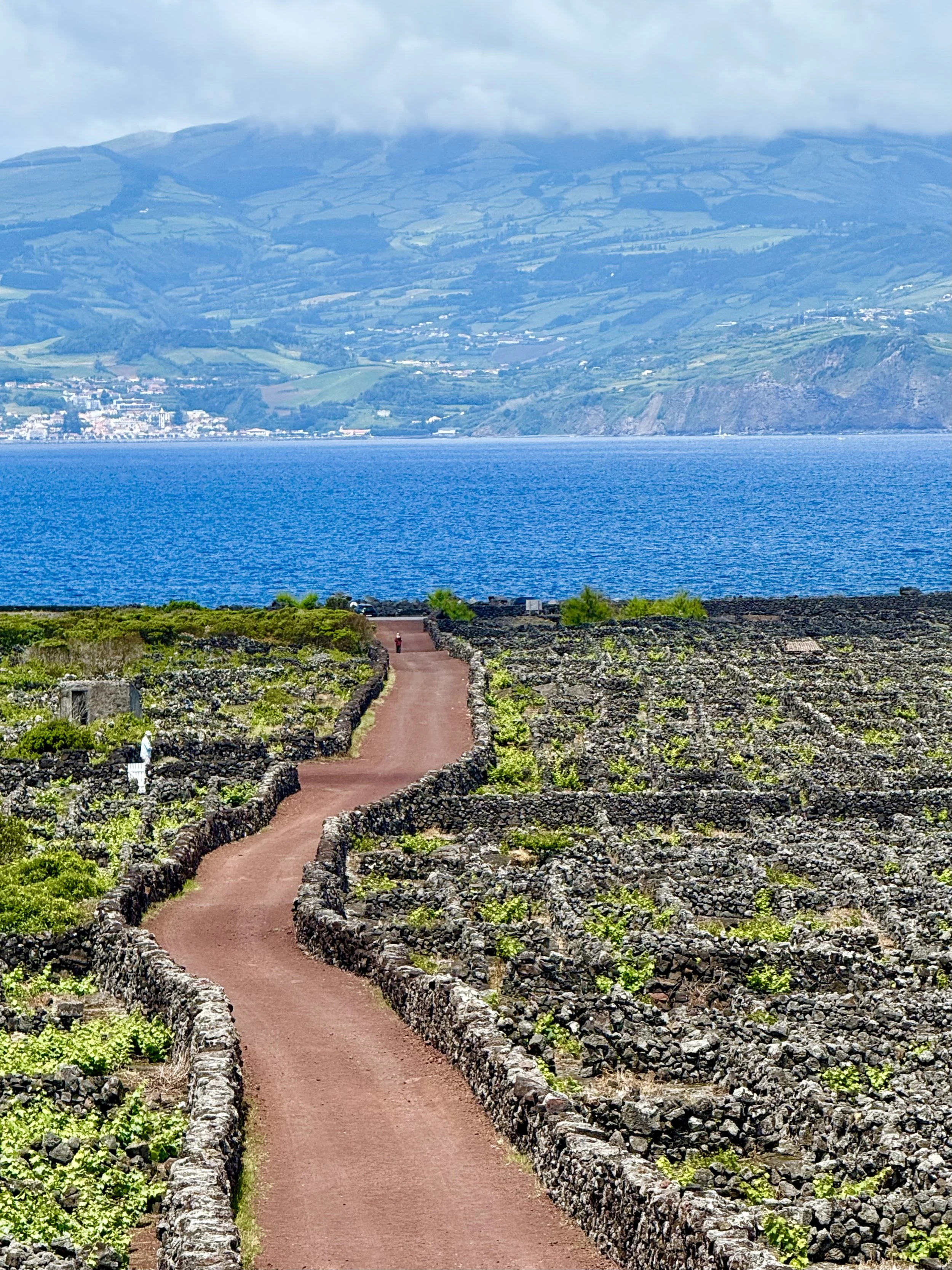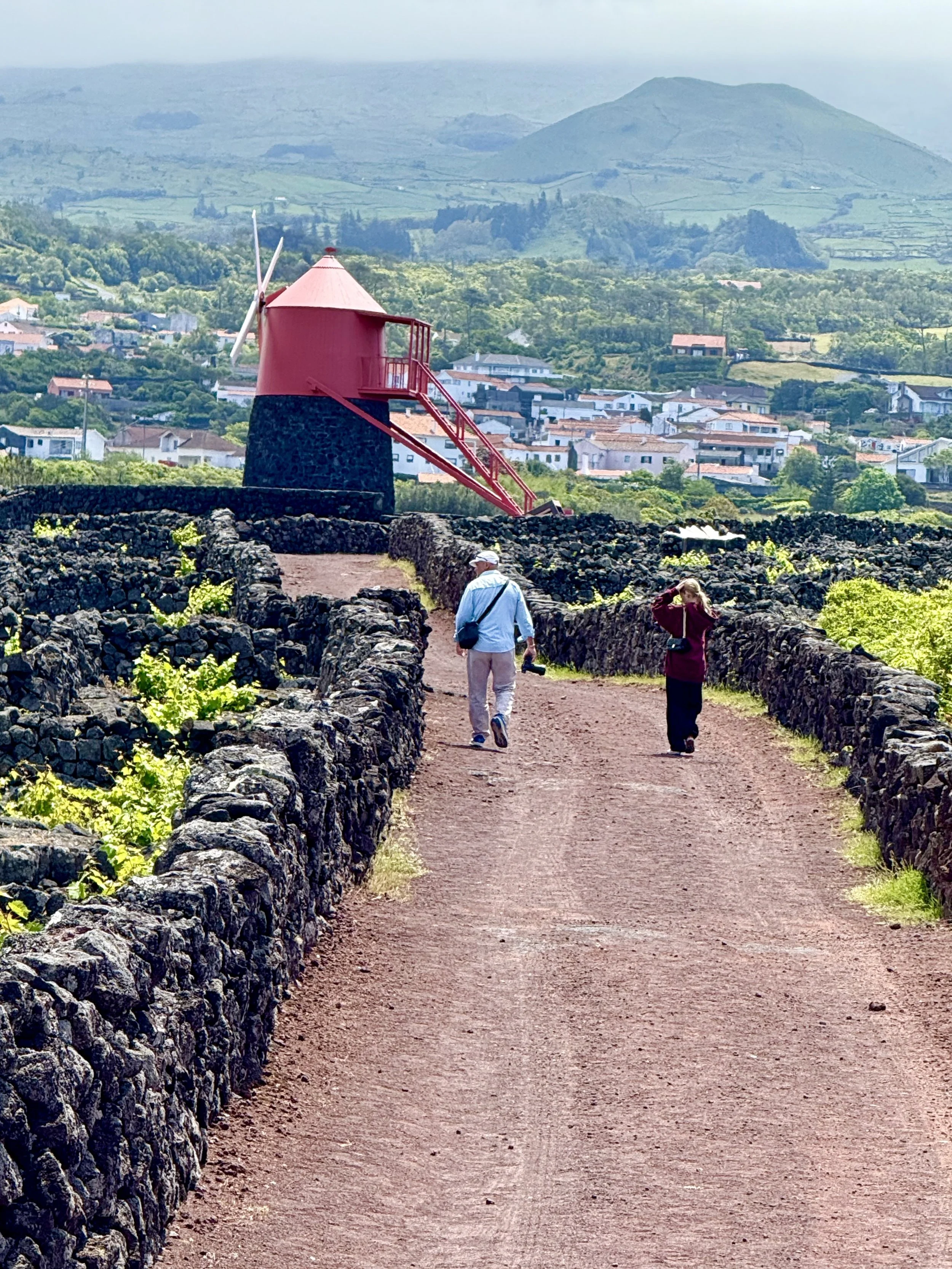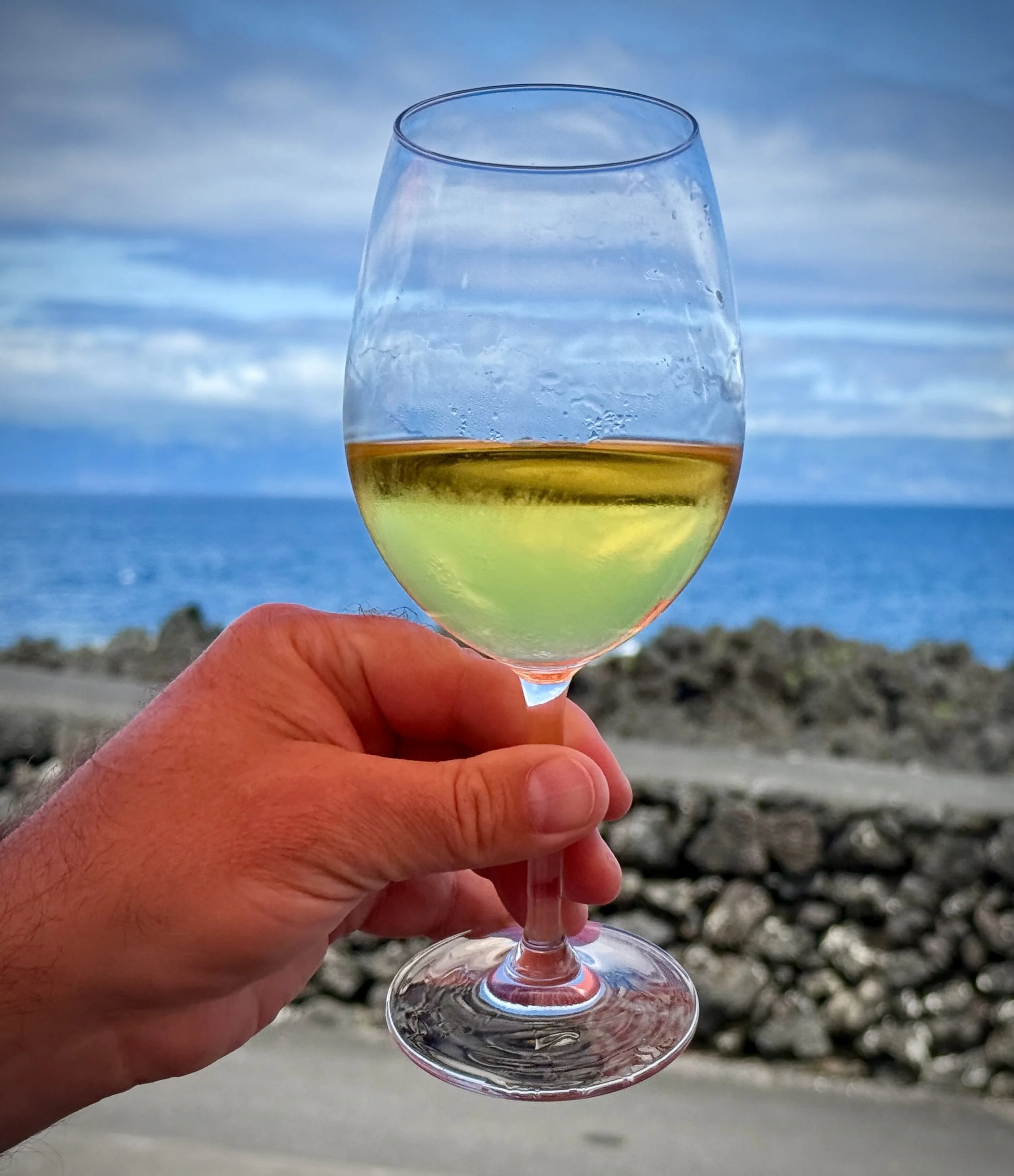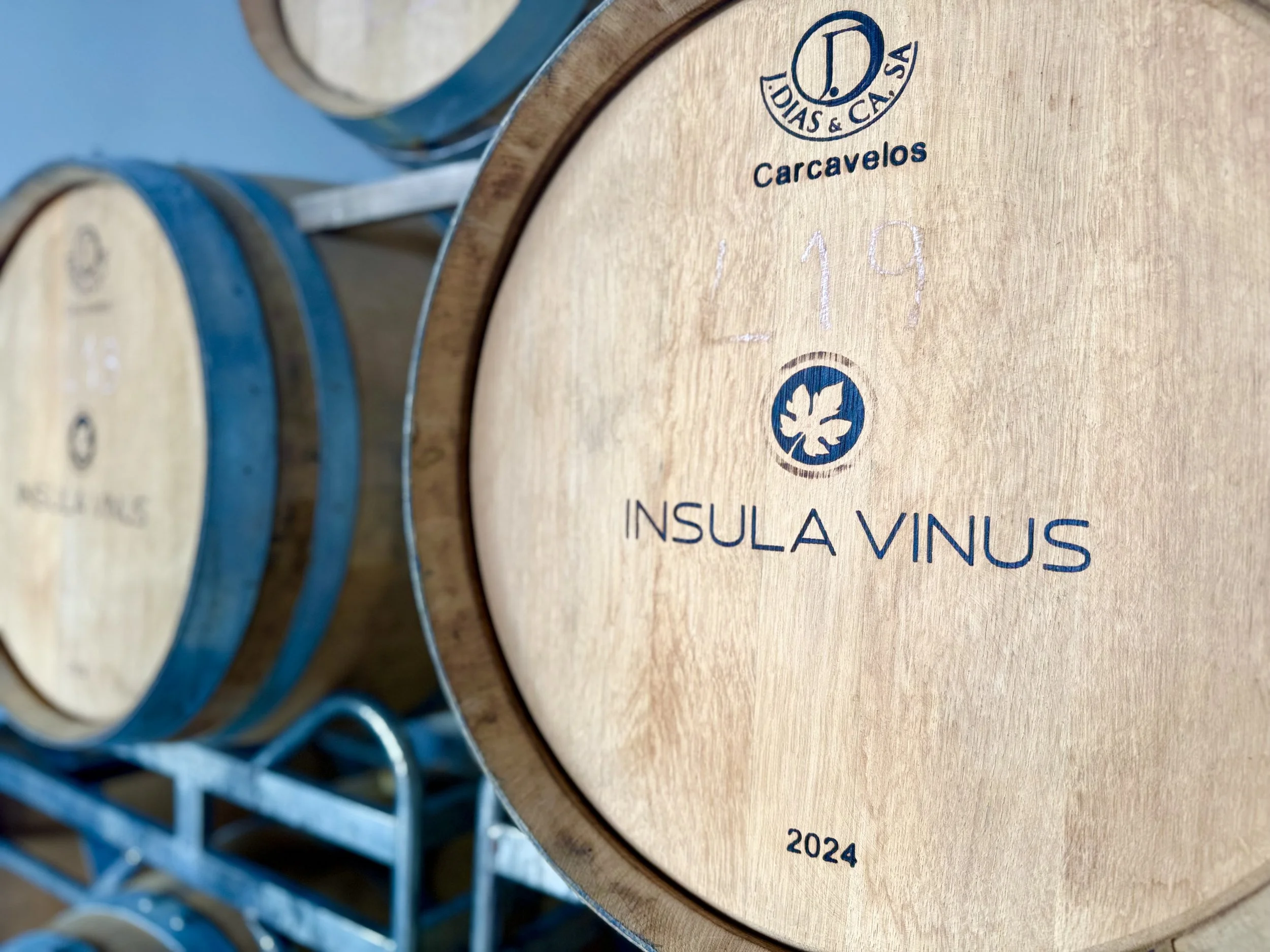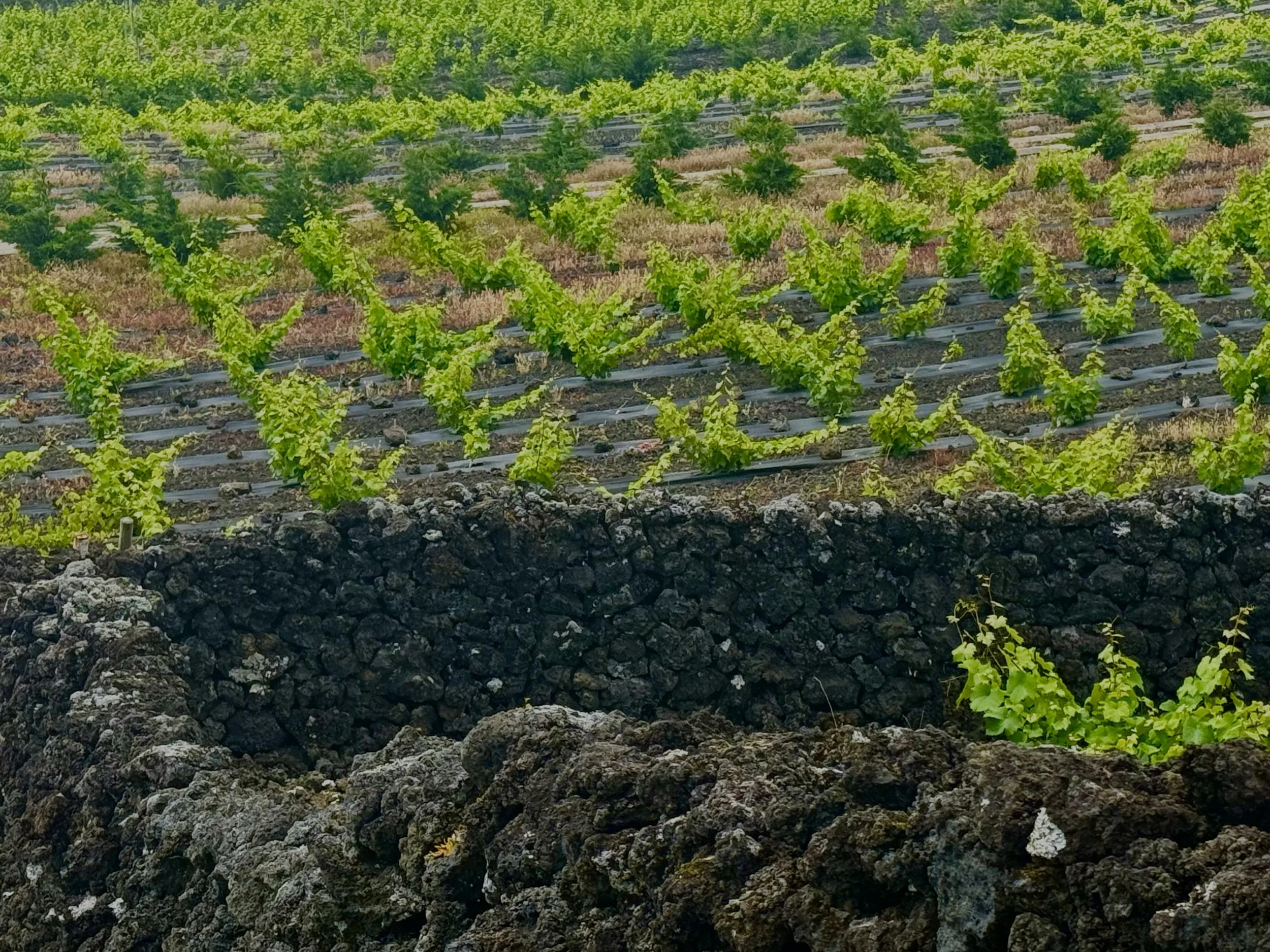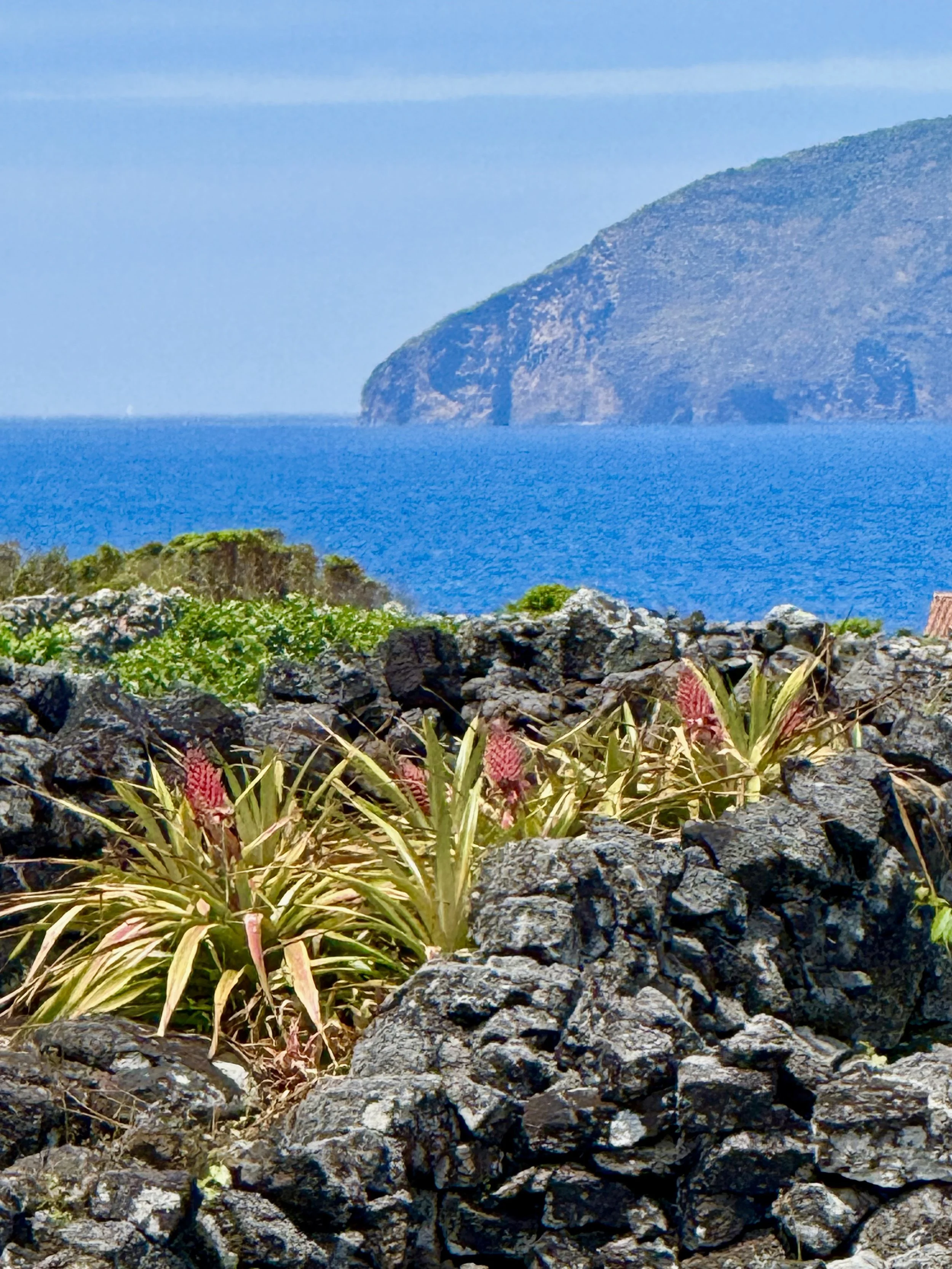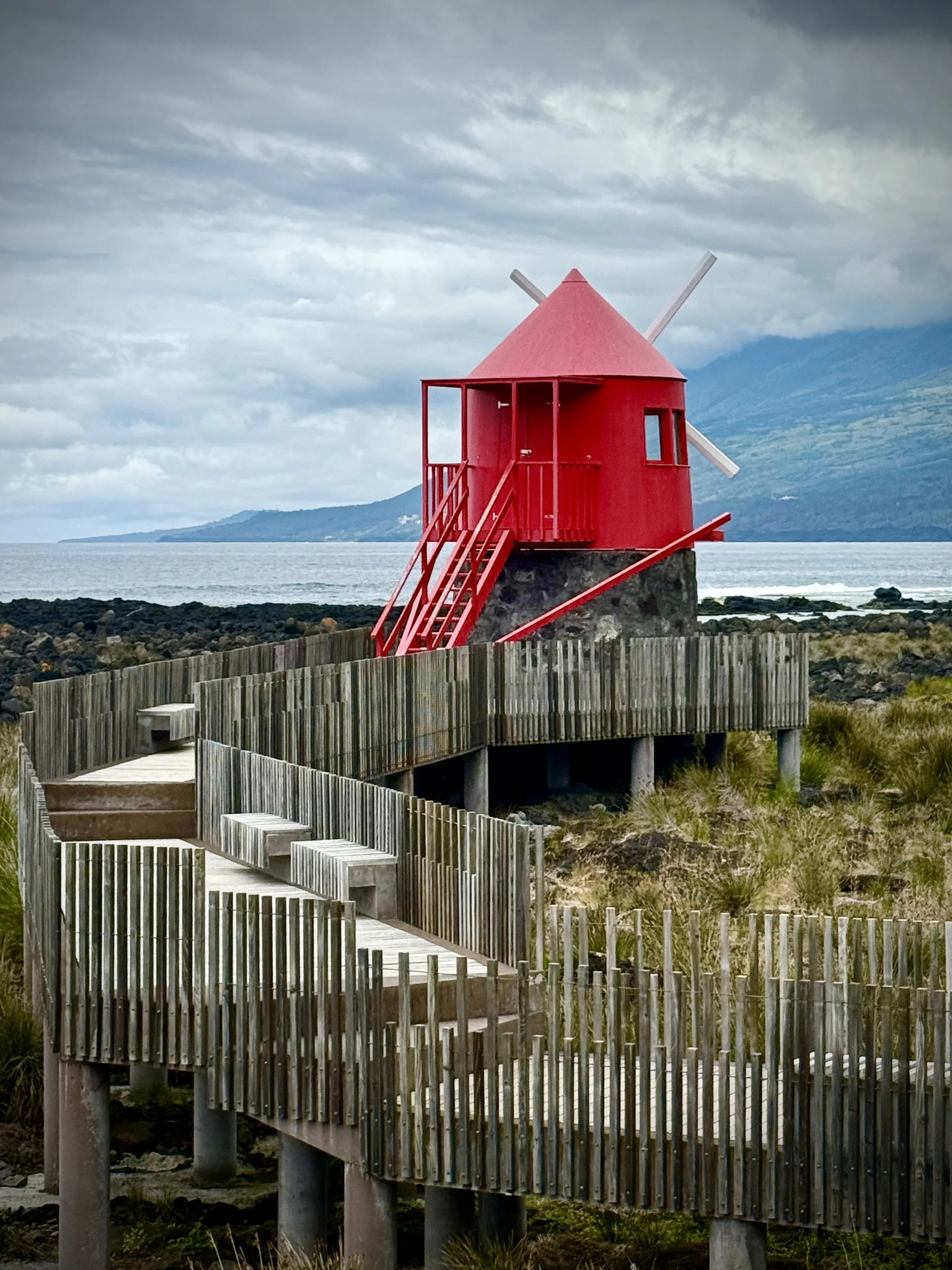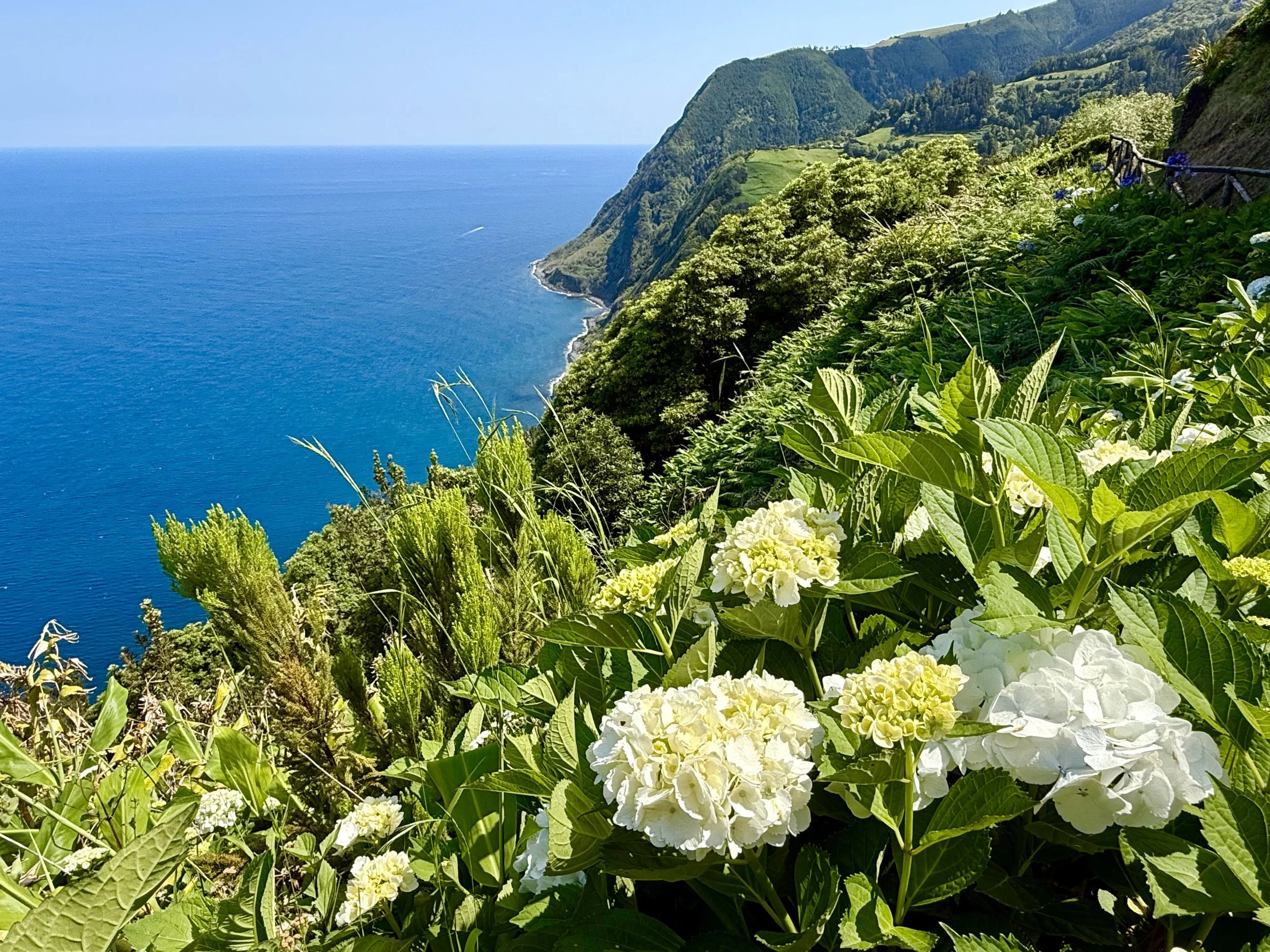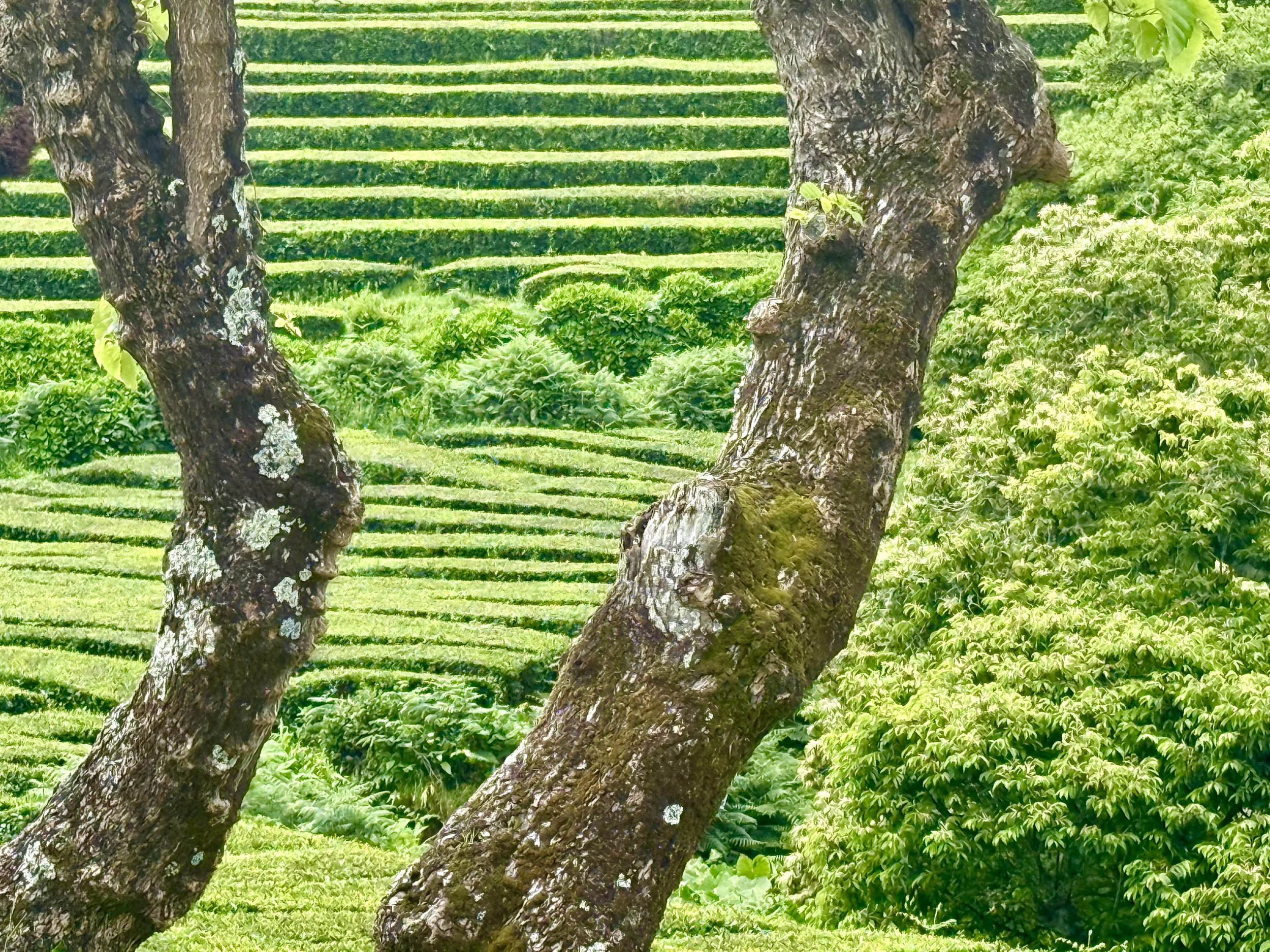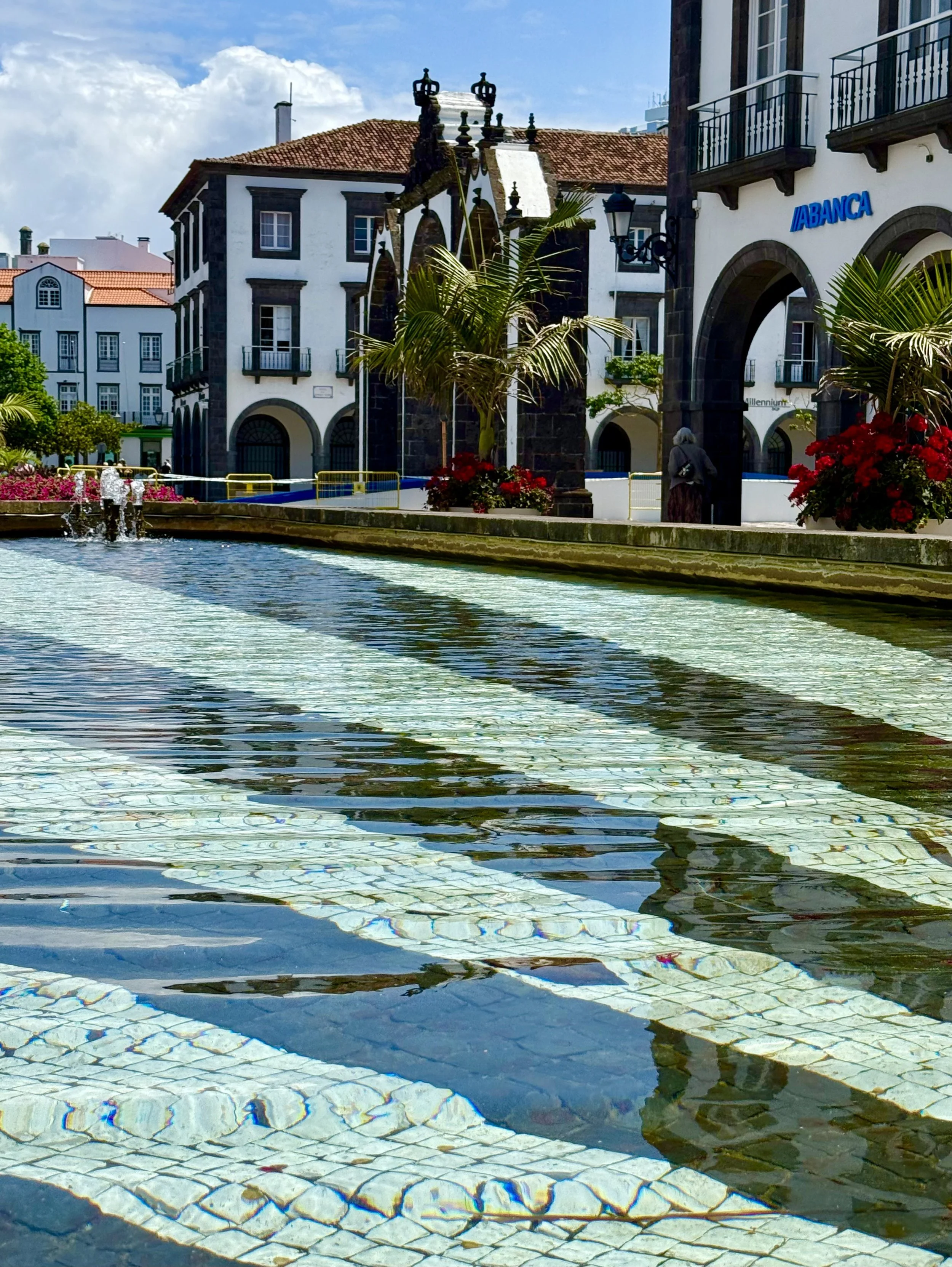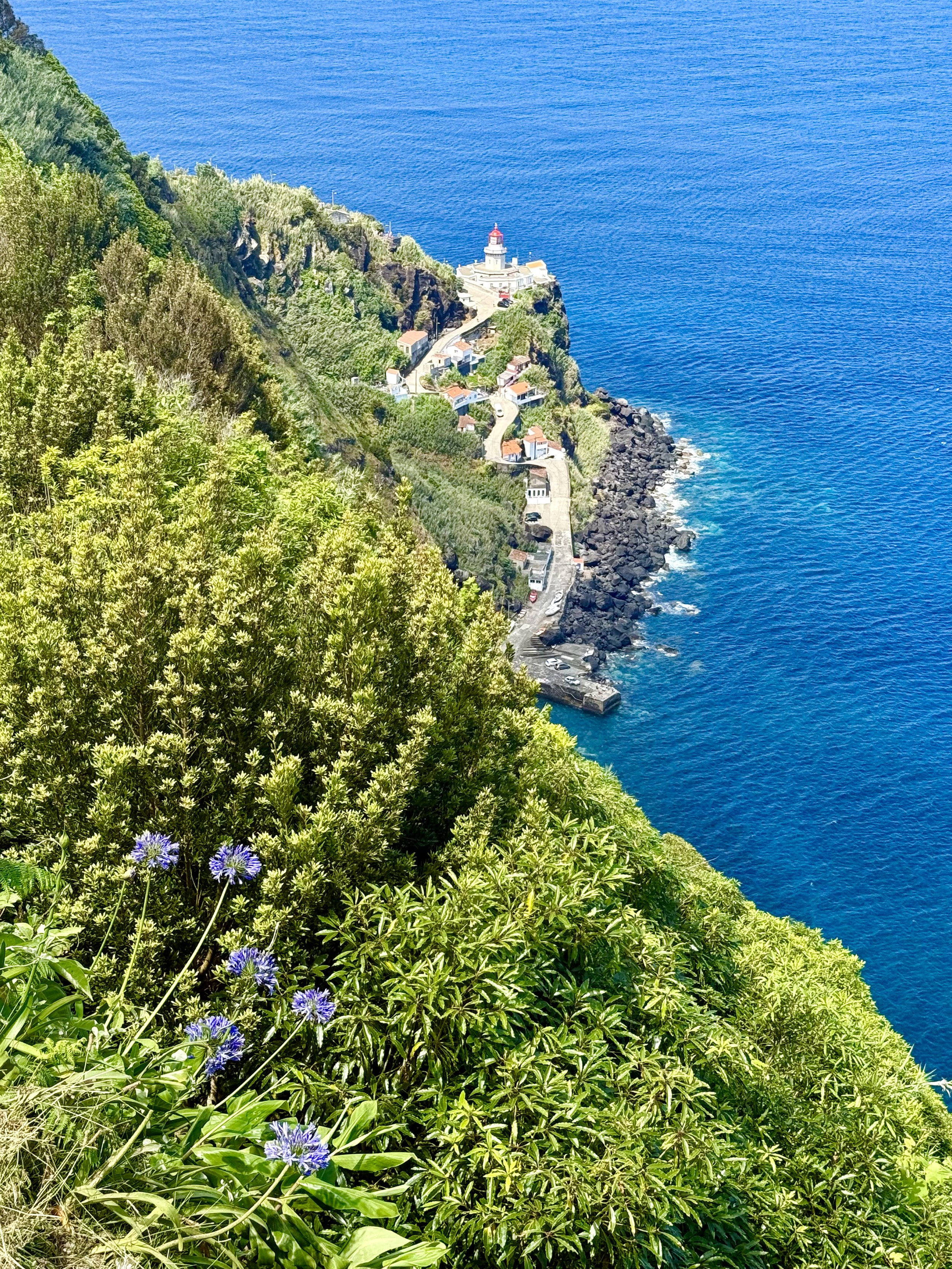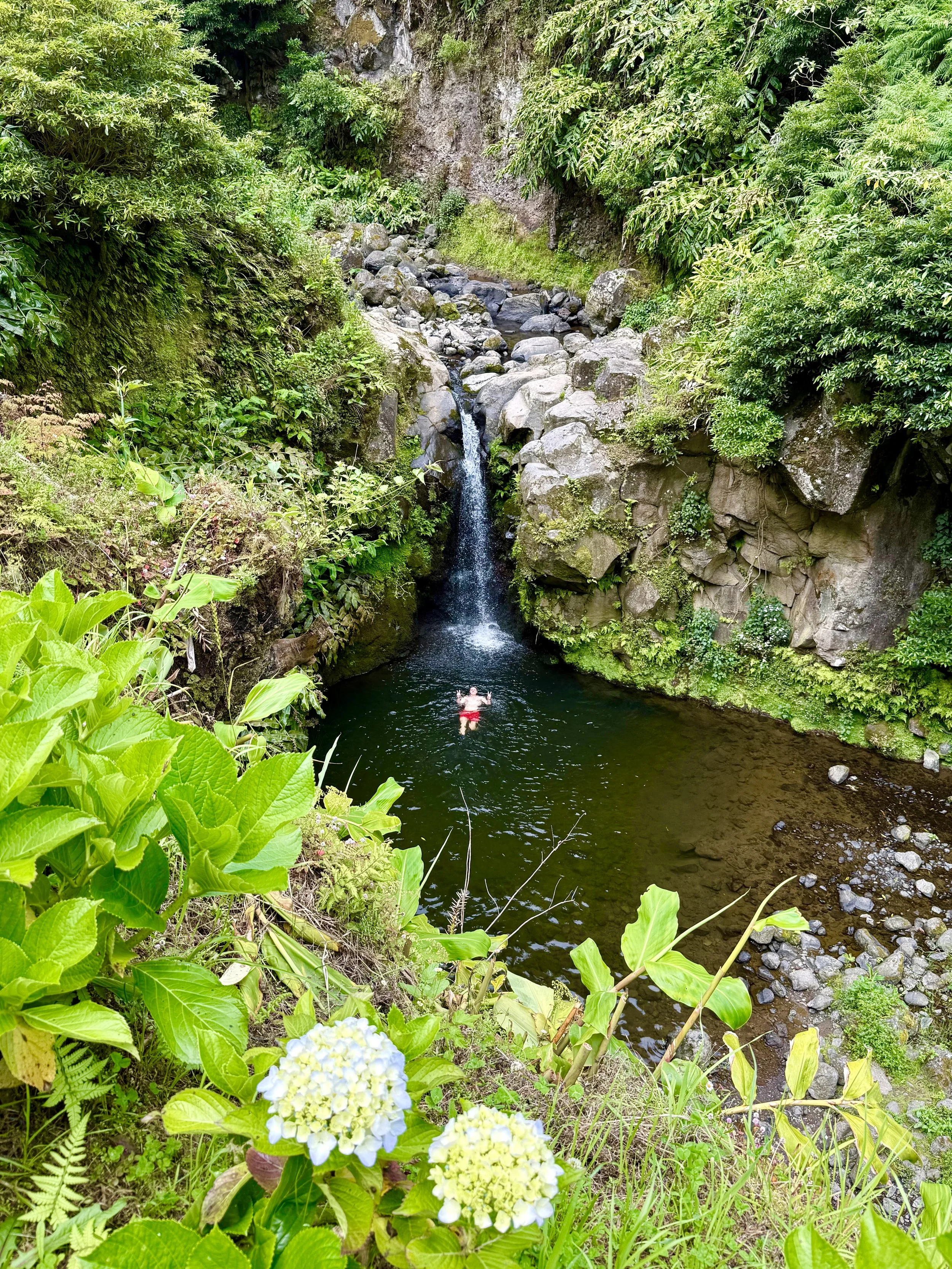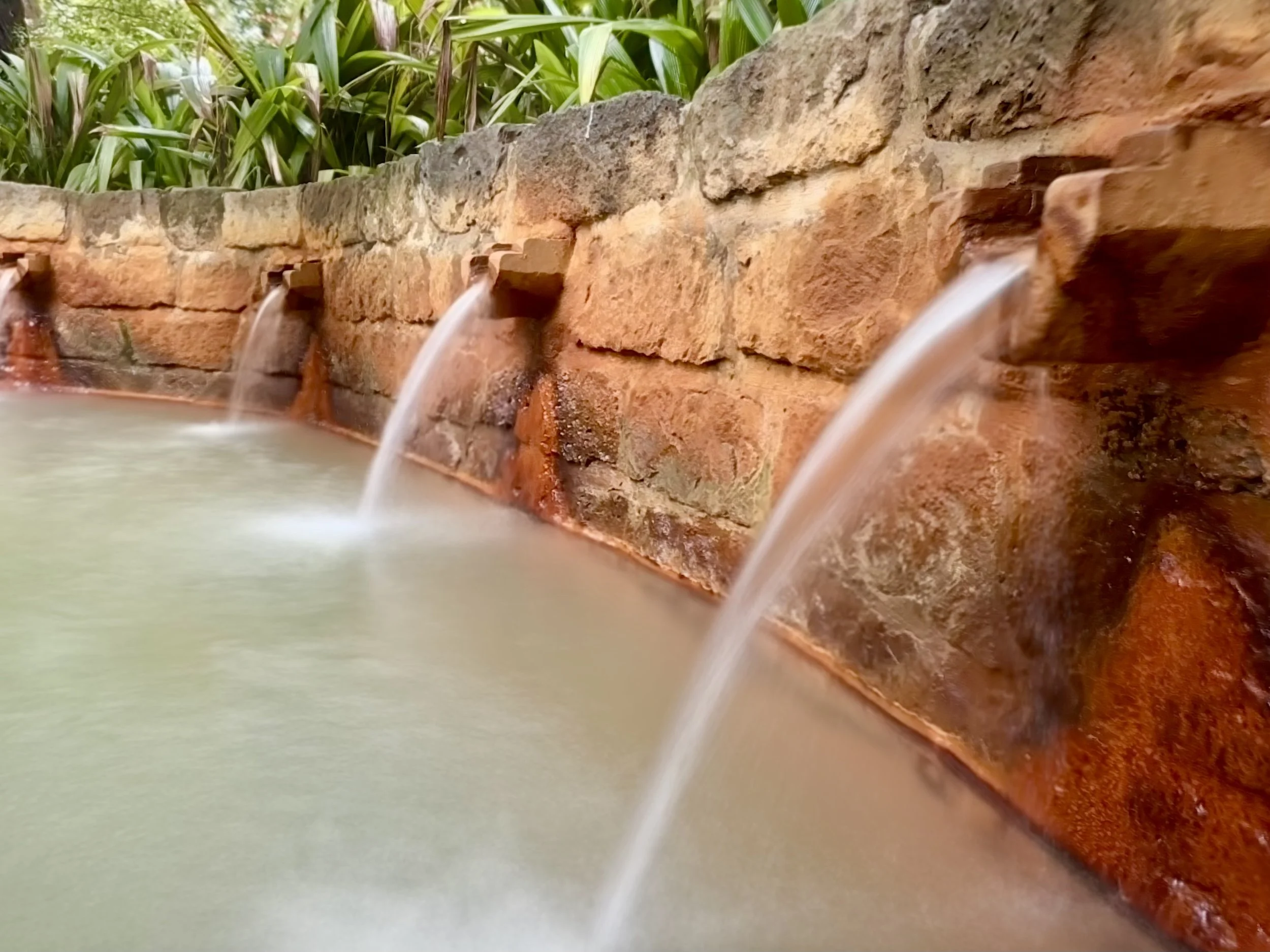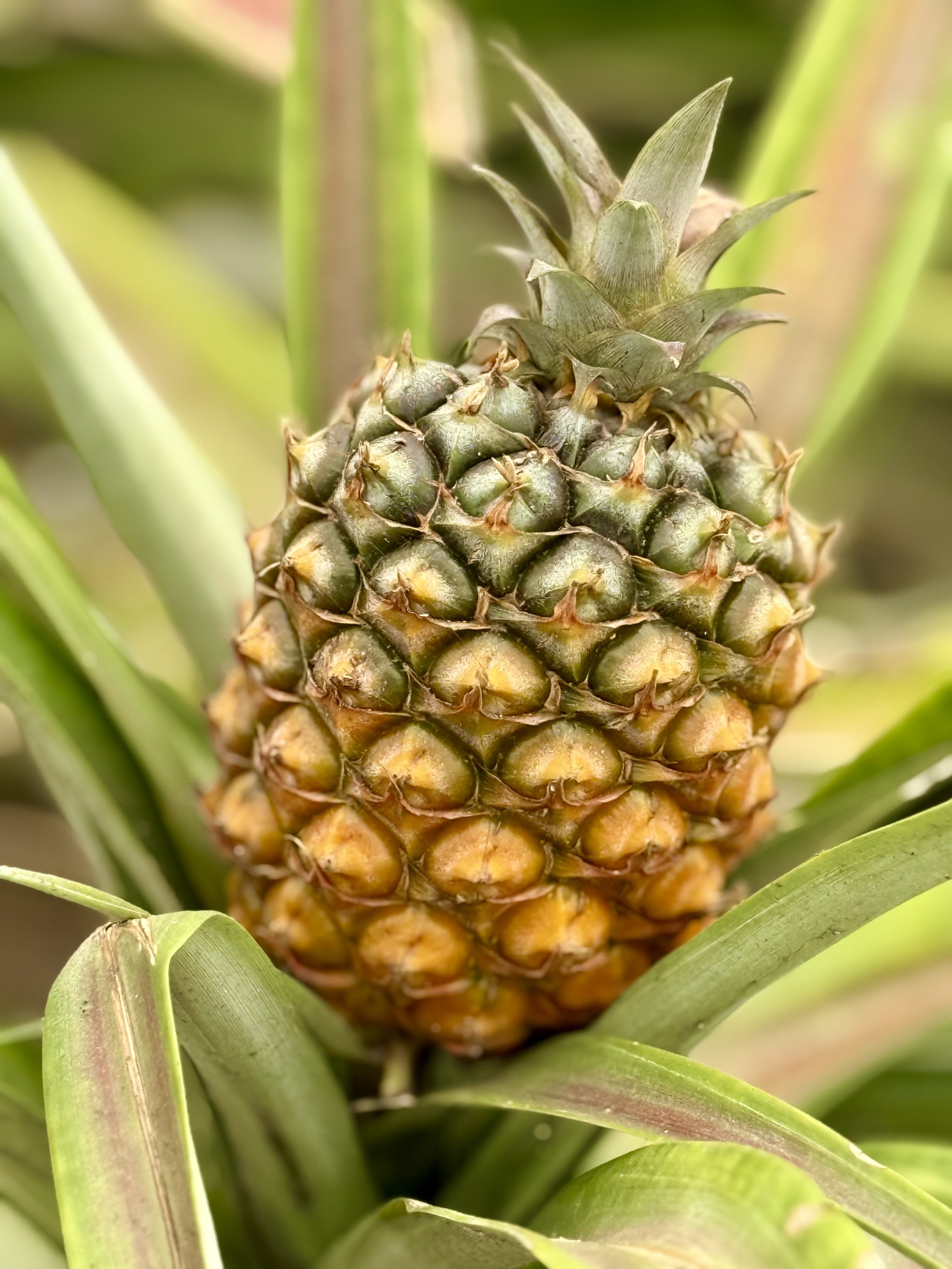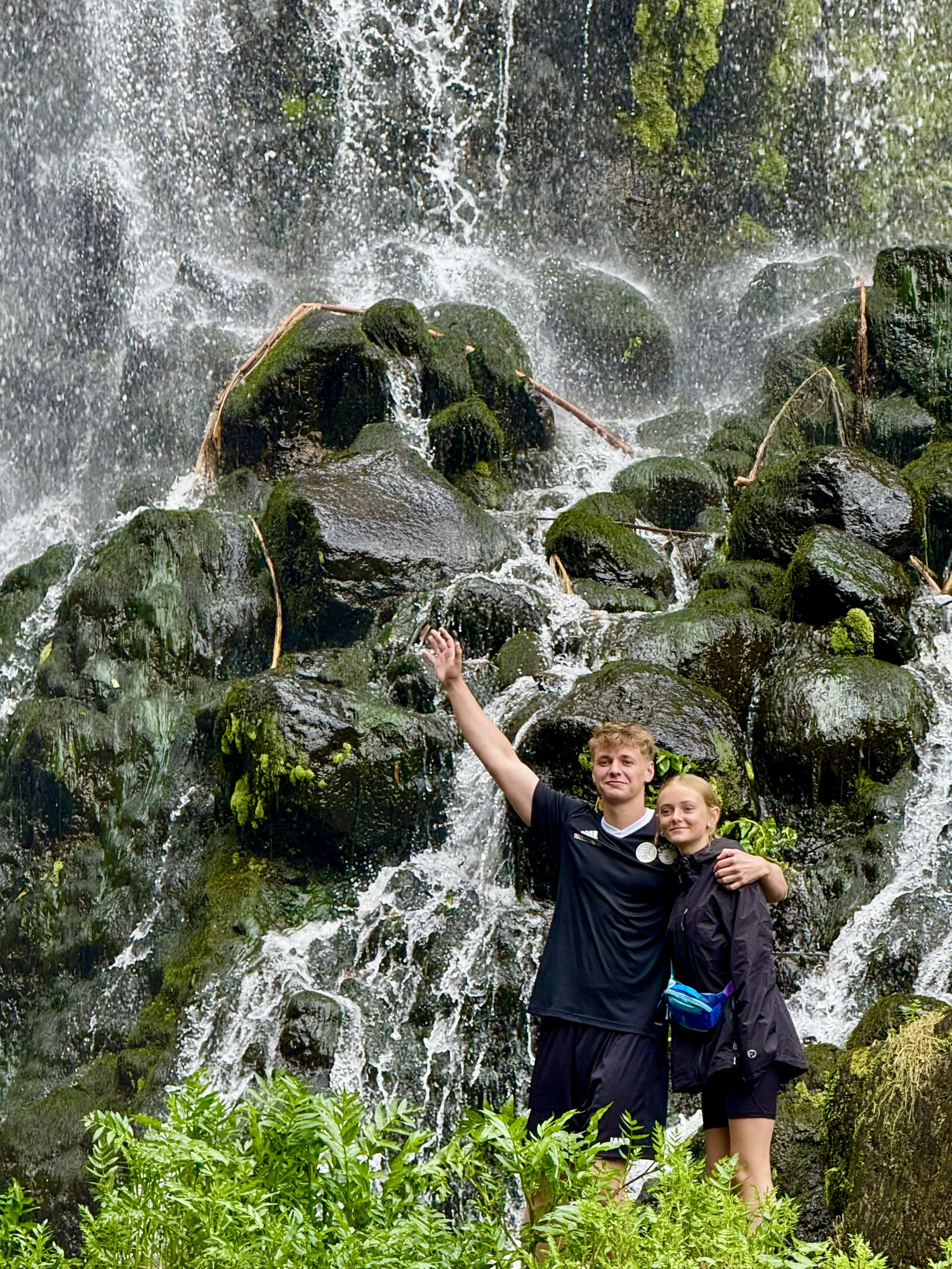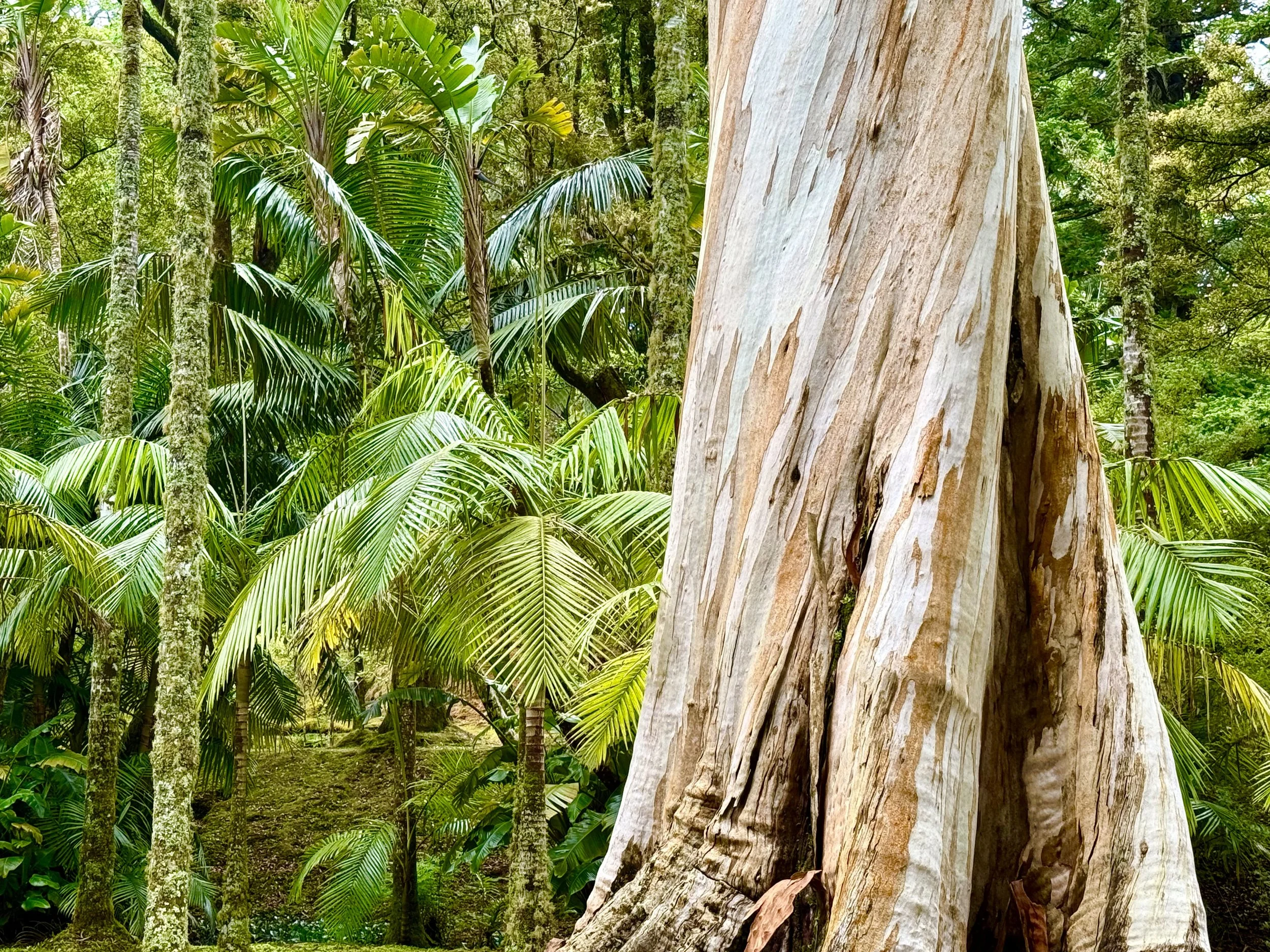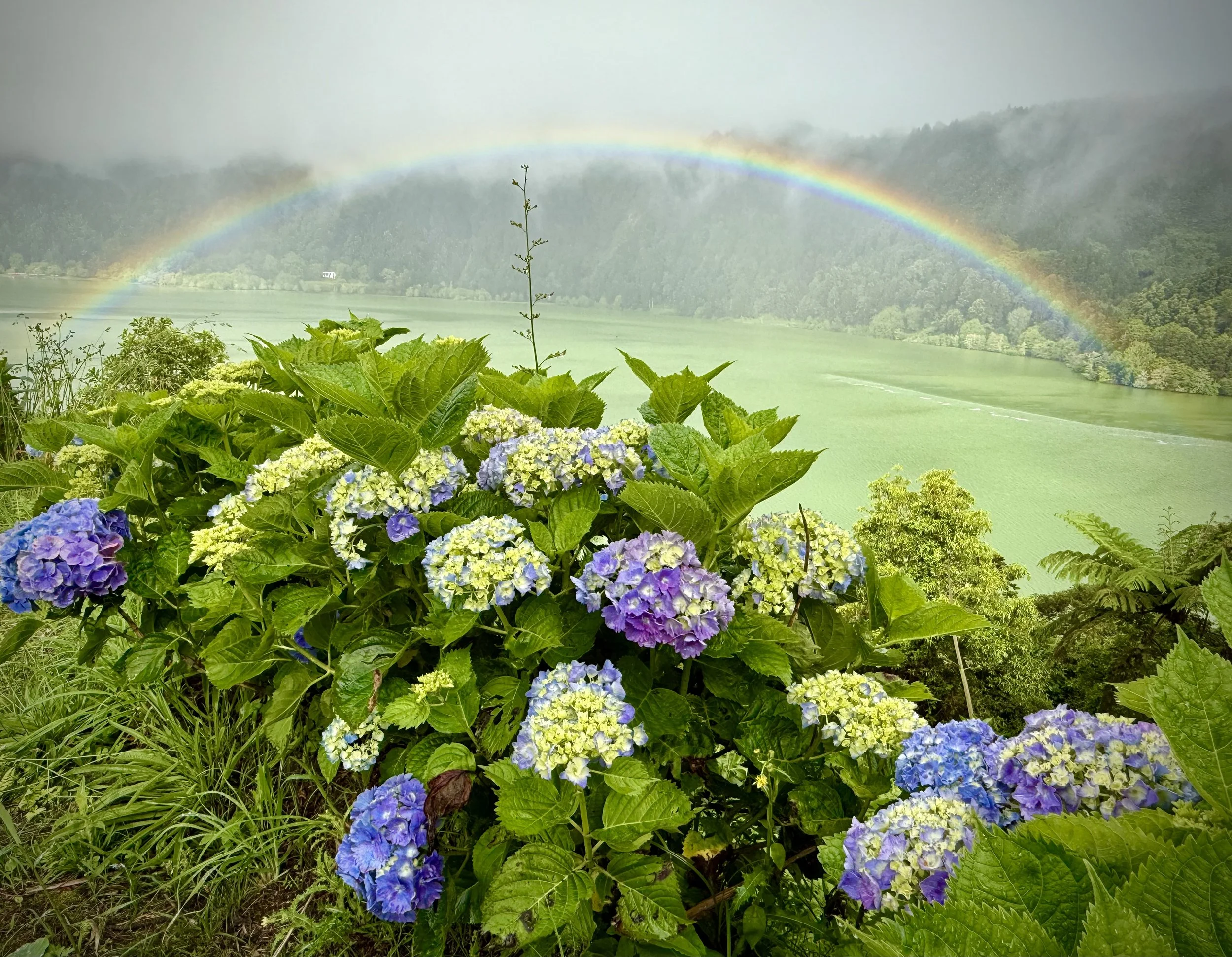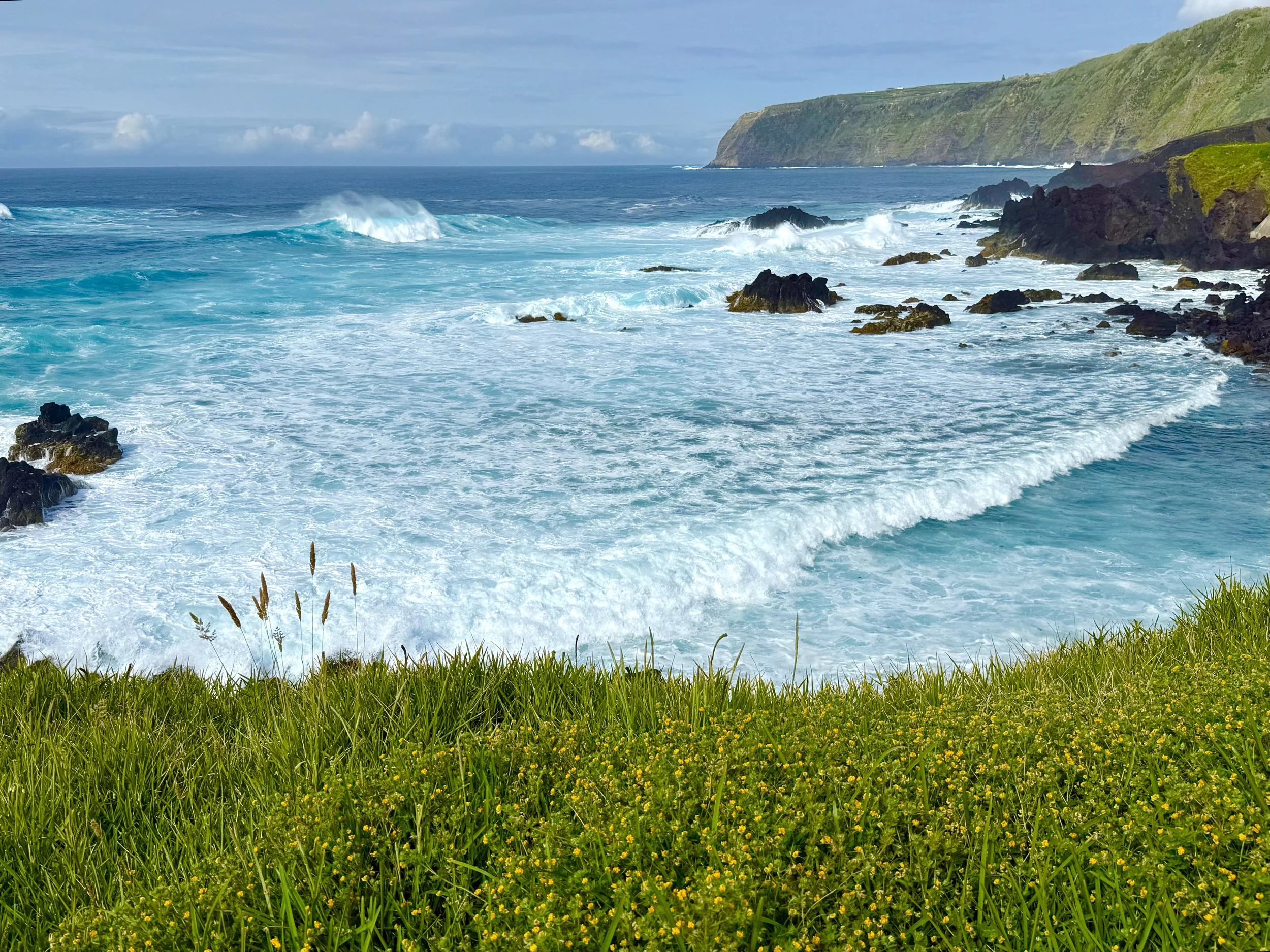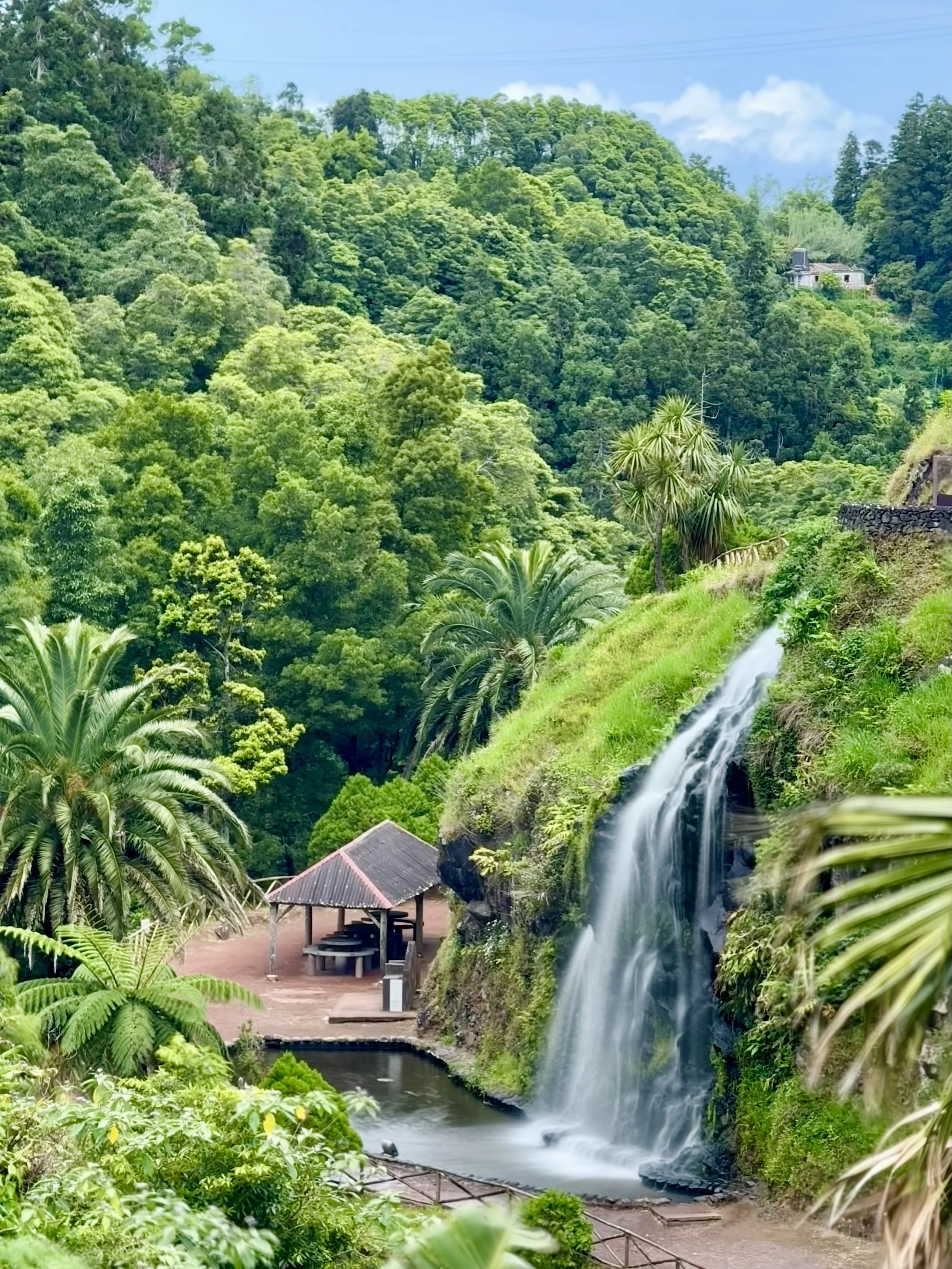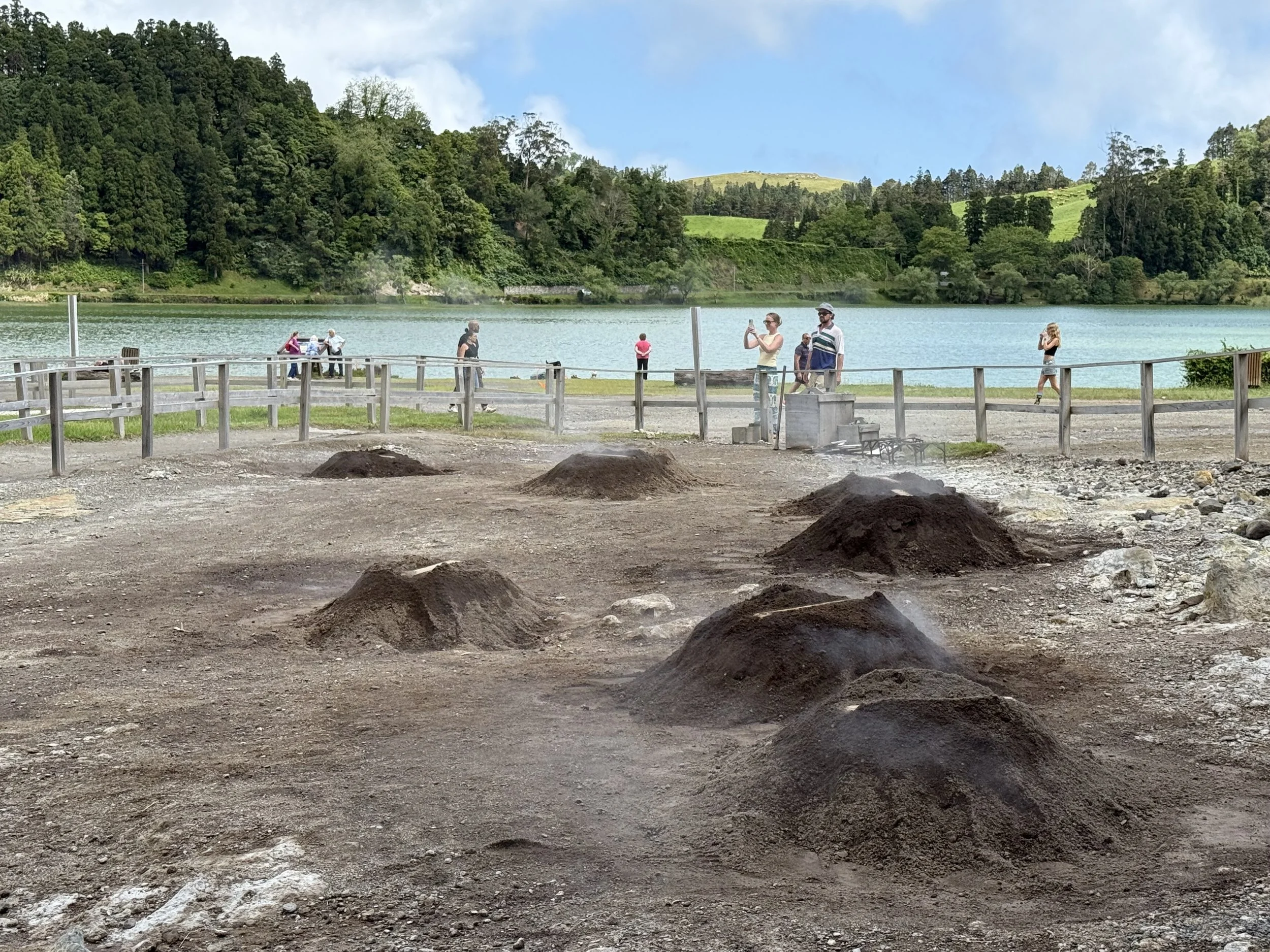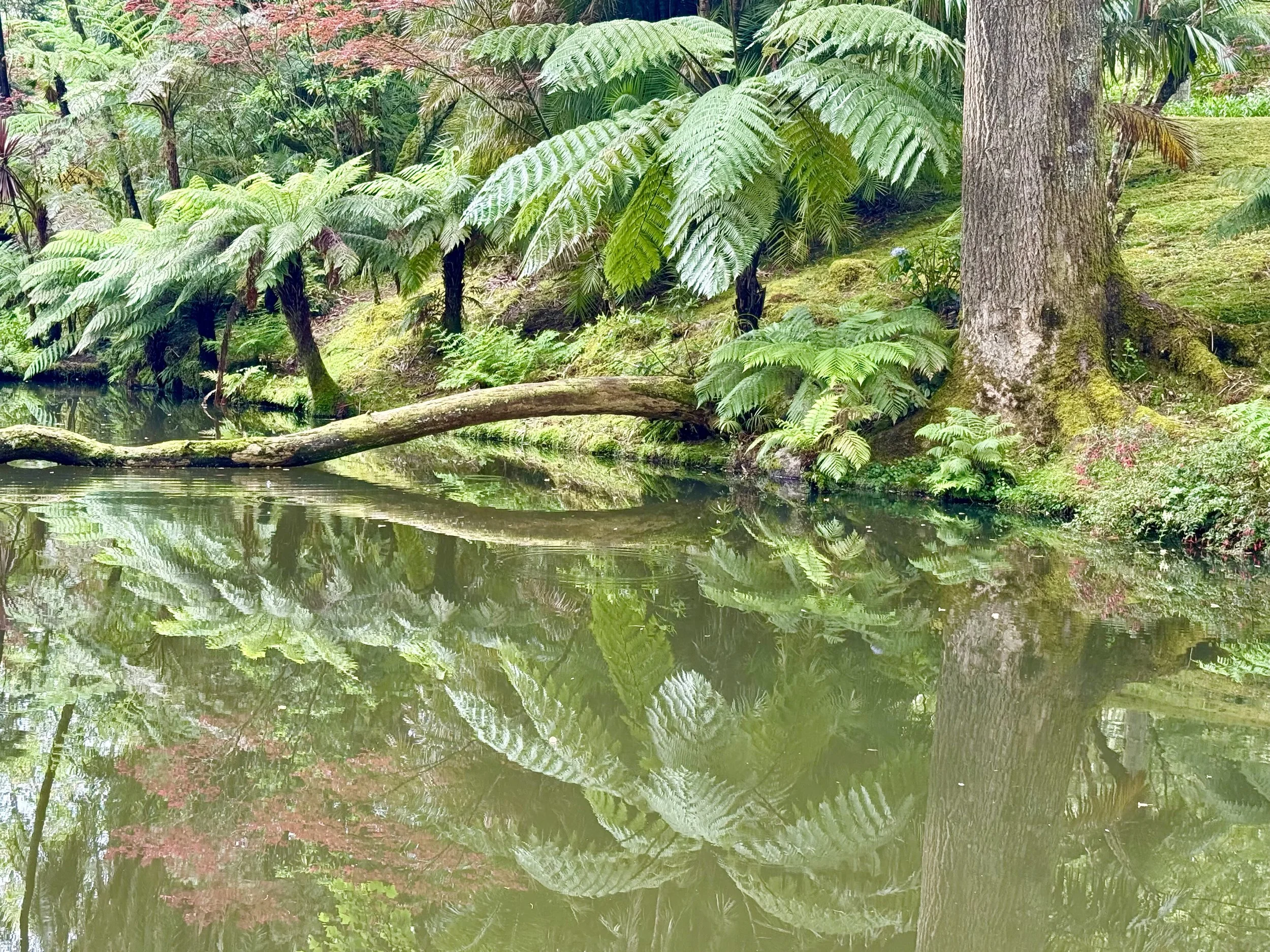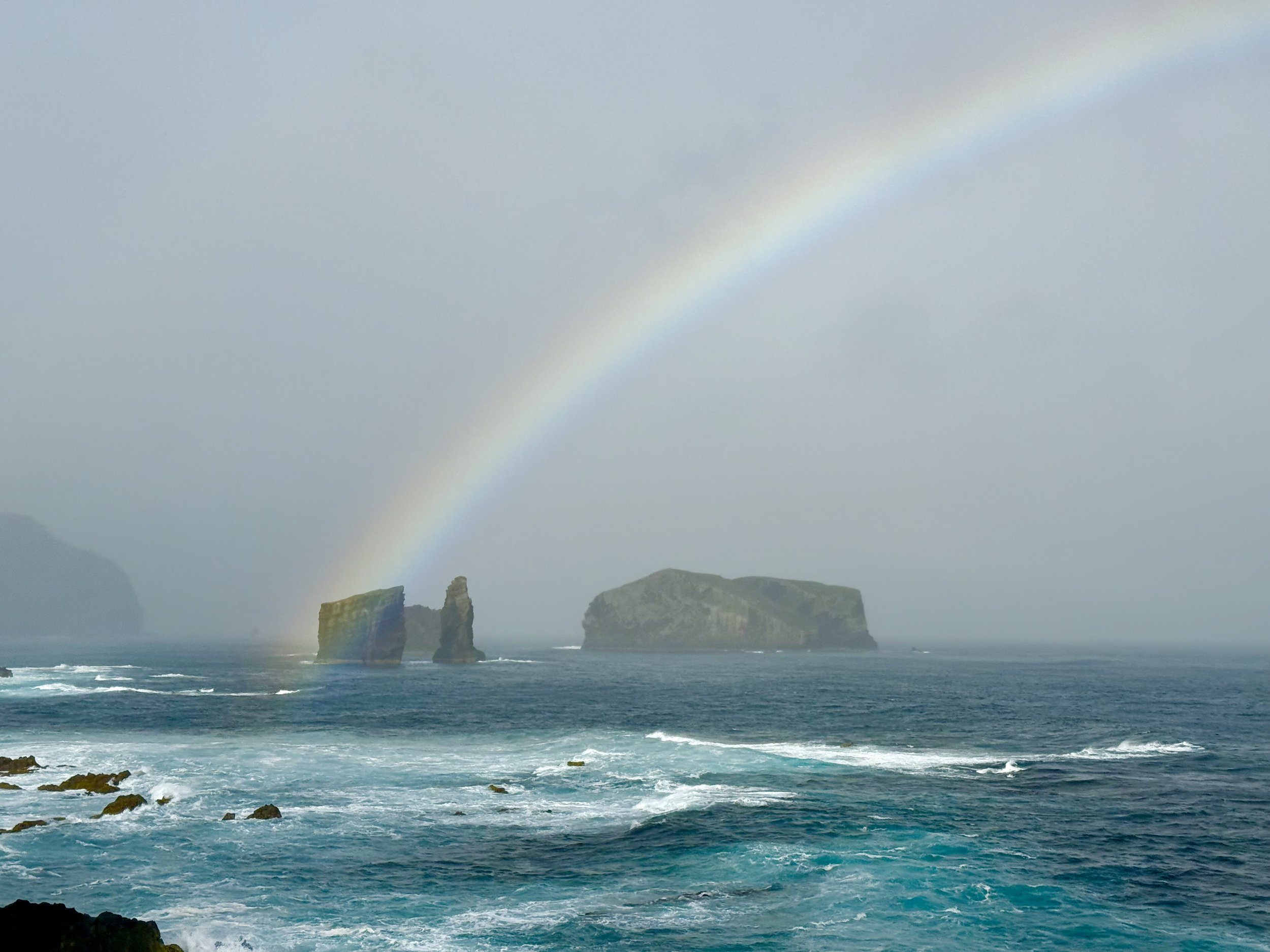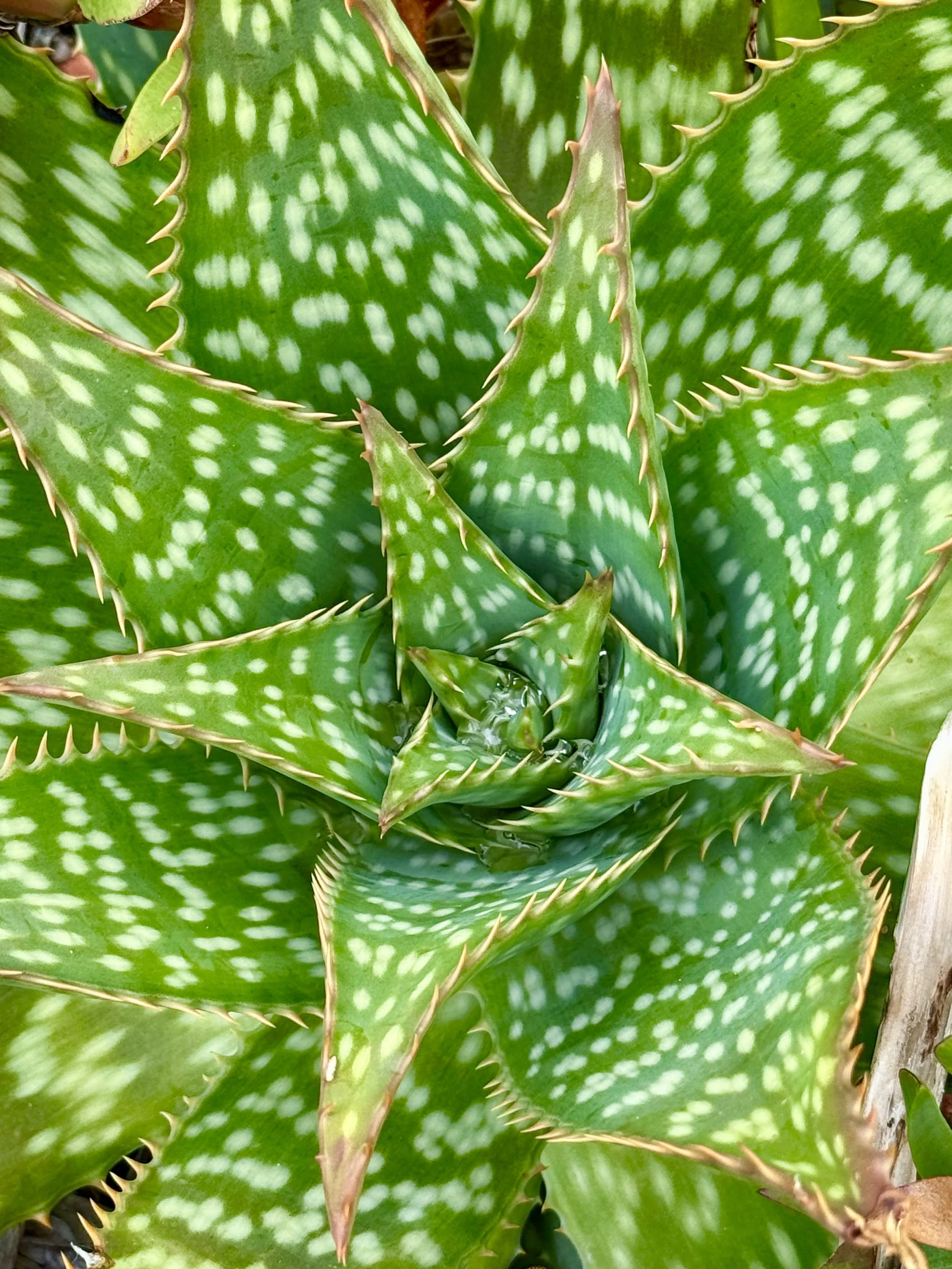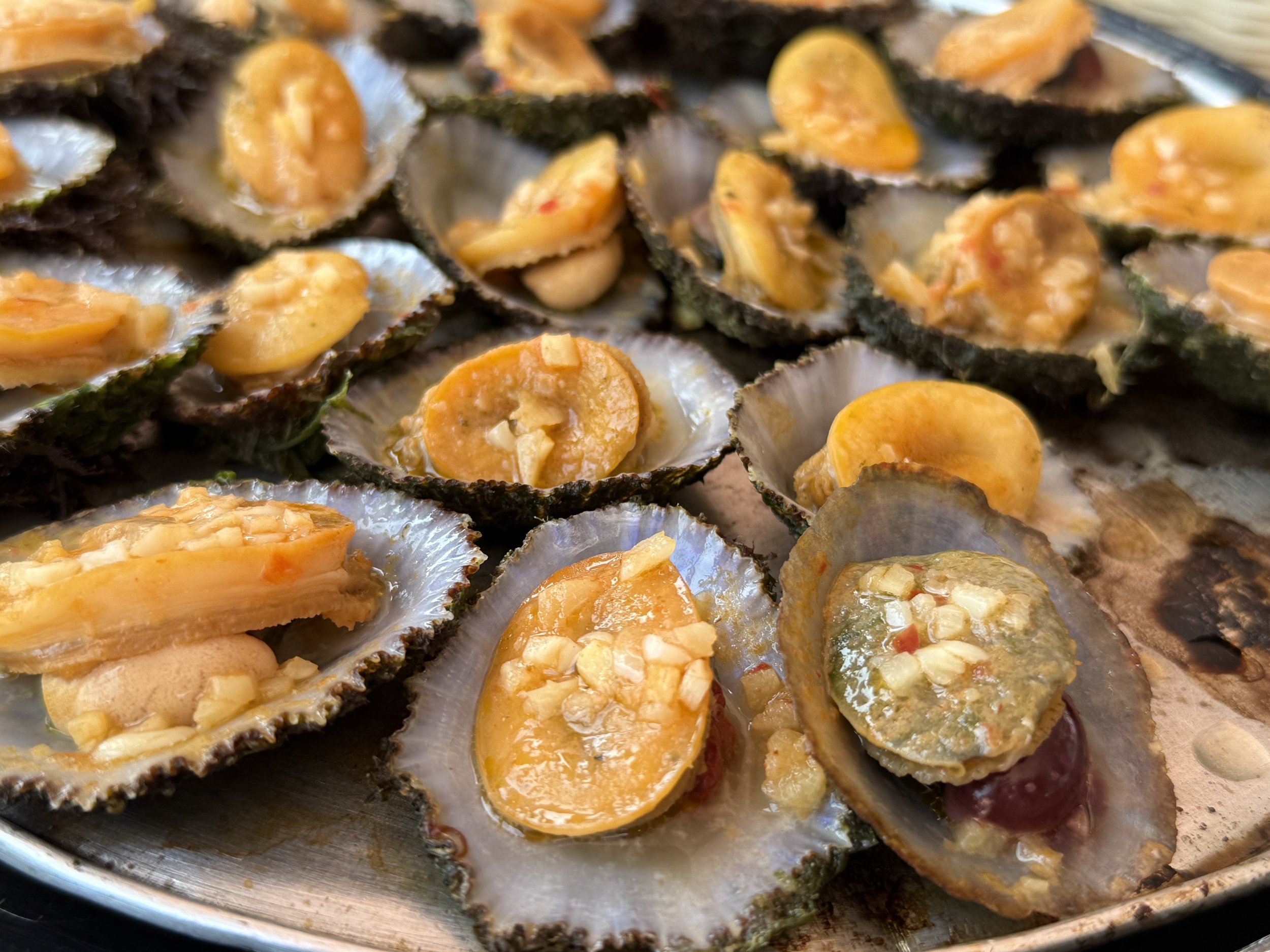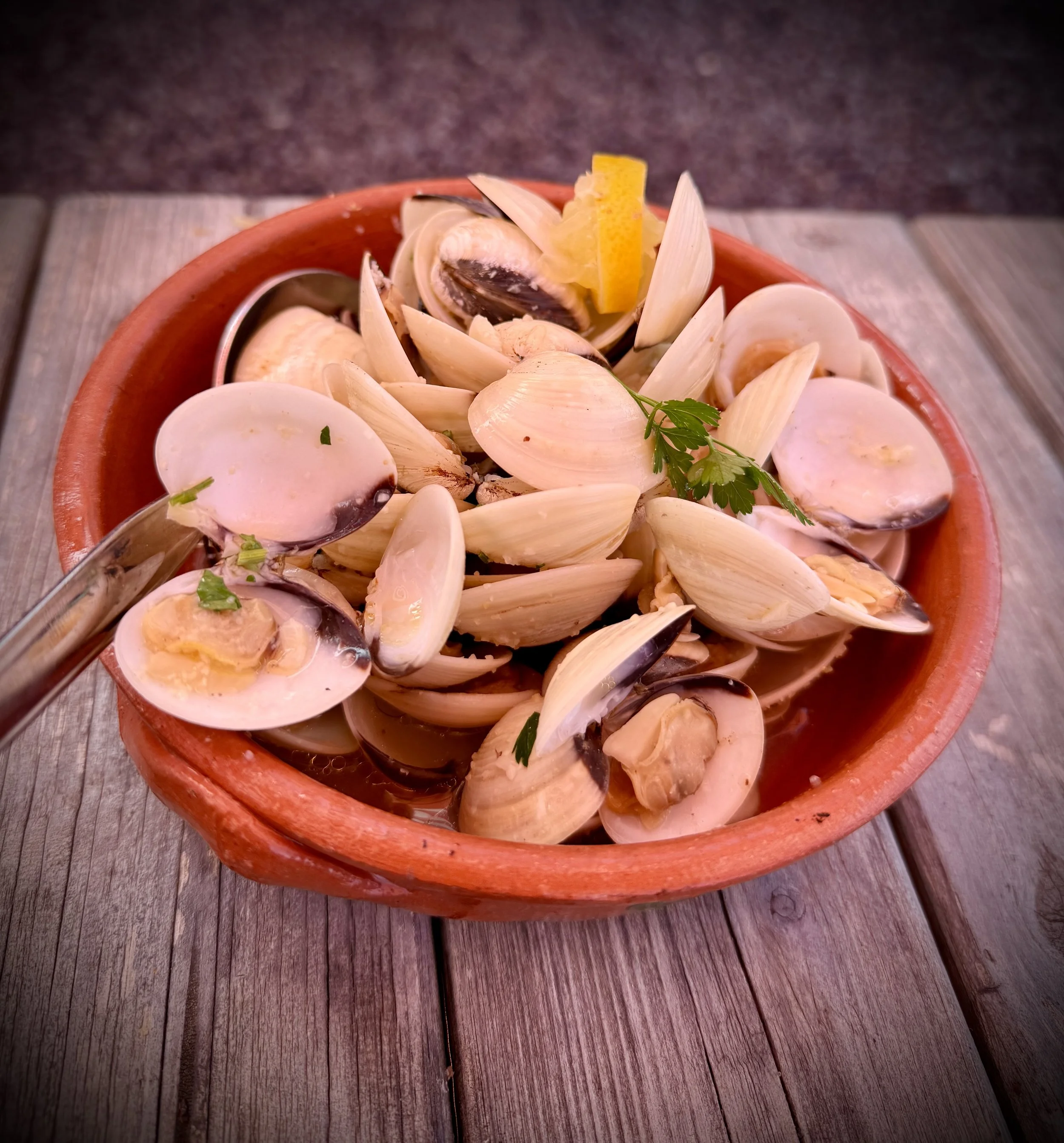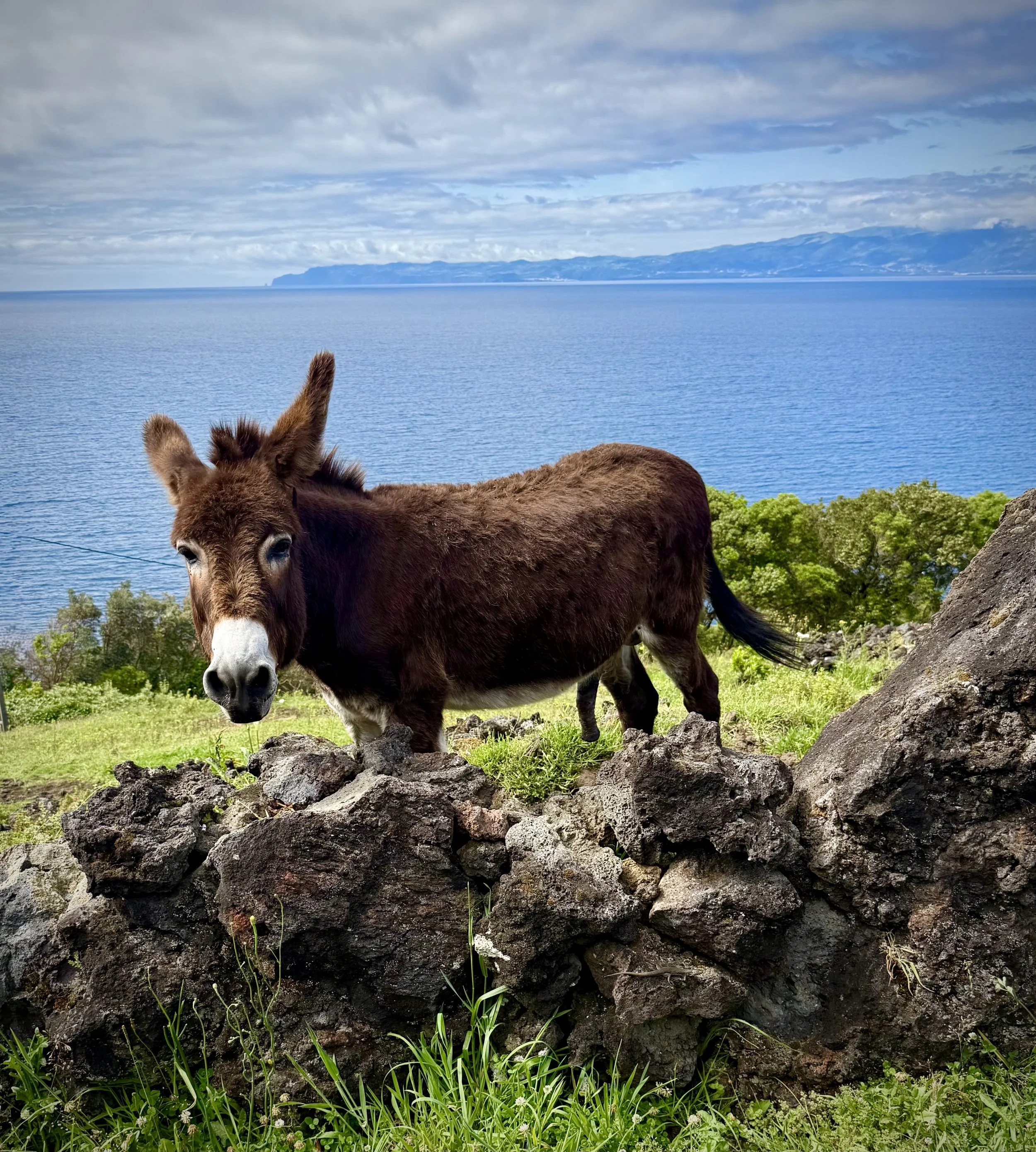Azores Travel Guide
Volcanic Heart, Atlantic Soul
Sete Cidades lakes glimmer in neon greens and blues, São Miguel island
Where to go, what to do, and what not to miss on three of the Azores’ most enchanting islands
“It’s as if Germany, Ireland, and Hawaii had a threesome,” Christoph remarked as we snaked through impossibly green fields tattooed with black lava stone fences.
It was hard to disagree.
The Azores wear many faces. Like Hawaii, they’re a volcanic archipelago blooming in the middle of the ocean, wild and untamed, yet startlingly gentle. You’ll find black sand beaches, rugged lava coastlines, and a green so vibrant it looks digitally enhanced. Even the air carries a similar signature: salty, clean, and charged with life.
São Jorge’s north coast with its famous Fajãs
But where Hawaii pulses with Polynesian rhythm, the Azores hum with something different—a wilder, Atlantic soul. This is Europe, but not the Europe of grand boulevards and Baroque cathedrals. Instead, picture fishing villages where cows outnumber people, thermal springs hidden in fern-choked forests, and crater lakes that mirror the clouds so perfectly they seem to dissolve the line between earth and sky.
We spent 17 days island-hopping between São Jorge, Pico, and São Miguel, and each island offered something singular. Some days we soaked in hot springs ringed by jungle, others we hiked among the clouds. We shared the road with friendly cows, swam in lava-rock pools, and listened to the cagarros’ eerie nighttime cries—owaa owaa—as the mist curled in.
Rounding hairpin turns on roads barely wide enough for us and the perfect hydrangeas, we’d catch sudden glimpses of the Atlantic tumbling away below. Villages appeared and disappeared in the fog like dreams. Fajãs—those stunning, flat lava flows that tumble into the sea—held gardens, wild calla lilies, and stone paths to nowhere.
Each island had a different mood. A different pace. A different story. Here’s what we did, and what we learned:
Simão Dias natural pool on Fajã do Ouvidor
Sao Jorge: A Soft Landing
We began our trip on São Jorge, a narrow, verdant ridge rising steeply from the sea. It was a soft landing—quiet, uncrowded, and deeply welcoming. This is a nature lover’s paradise, where the landscape feels both dramatic and gentle, and the pace slows enough for you to notice everything: the call of a bird, the scent of wild mint, the way clouds flirt with the mountaintops.
Our first full day took us to Fajã do Ouvidor, one of the island’s most scenic coastal plateaus. We dipped into the jewel-toned Simão Dias natural pool, its black lava walls worn smooth by the sea. Afterwards, we tried our first taste of lapas—local limpets grilled with garlic and butter, salty and chewy and what would become a recurring craving.
Fajã da Caldeira de Santo Cristo
One of our favorite hikes of the trip started at Serra do Topo, where the trail descends steeply down to Fajã da Caldeira de Santo Cristo, famous for its rare clams. The route hugs the cliffside through lush forest and opens to sweeping ocean views, before arriving at the fajã itself—isolated, soulful, and unreachable by car. We continued on to Fajã dos Cubres, following a peaceful trail between wetlands and hydrangea hedges.
On other days, we wandered freely, finding an abandoned lighthouse at the island’s north end, its haunting silhouette outlined against the Atlantic. We played like kids on locals-only black sand beaches, warm underfoot and perfectly positioned for views of towering Mount Pico across the channel.
São Jorge felt like a secret—one we were lucky to be let in on.
Pico: in the Shadow of a Giant
After São Jorge’s softness, Pico felt bold—darker, denser, and somehow more elemental. The island takes its name from Mount Pico, Portugal’s highest peak, which at 7,713 feet, looms over everything like a watchful sentinel. It’s a place where the land speaks in lava, and the people have learned to shape that lava into life.
Pico’s UNESCO-protected vineyards
We stayed in a lava home clinging high above the coast, where labyrinthine stone fences crisscross the landscape like ancient runes. These currais—low stone enclosures—shelter vines from wind and salt, creating the unique microclimate responsible for Pico’s UNESCO-protected vineyards. Everything here is done by hand: the planting, the pruning, the harvest. The result? Wines as wild as the landscape they come from.
We savored glasses of crisp, mineral-rich whites grown in basaltic soil, often just steps from where the grapes were picked. The local verdelho pairs beautifully with grilled fish or queijo fresco and tastes of sea air and volcanic earth.
Pico invited us to slow down and look closer. To trace the coastline where lava meets ocean in explosive force. To wander through ghostly whaling towns turned into wine cooperatives. And always, to look up at the mountain, ringed in mist, and feel both small and grateful.
São Miguel: Big Island Energy
São Miguel’s Nordeste coast
Compared to the intimate scale of São Jorge and the raw drama of Pico, São Miguel felt massive and modern—a lush, volcanic playground that demanded both patience and presence. This photogenic island deserves at least a week of your time and your full attention.
We split our stay between Mosteiros in the west and Furnas in the east, getting a sense of the island’s dual nature: wild and serene, tropical and European, misty and sun-splashed, sometimes all at once.
In the west, we watched wild Atlantic waves crash against black basalt cliffs and spill onto silky black sand beaches. We hiked above the twin lakes of Sete Cidades, their legendary green and blue waters rippling beneath ever-changing skies. One foggy afternoon, we wandered through the Monte Palace ruins—an abandoned luxury hotel that sits eerily above the lakes, slowly being reclaimed by nature. Part haunted house, part time capsule, it whispered of grand visions and quiet endings.
Cascades in Ribeira dos Caldeirões
The island’s Ribeira dos Caldeirões nature park offered a lush, waterfall-filled sanctuary where mossy watermills and tree ferns made us feel like we’d stepped into a fairytale. At Caldeira Velha, we soaked in rusty, wild hot springs tucked into Jurassic ferns and moss-covered stone. Everything here—steam, rain, birdsong—feels alive.
The island’s pineapple plantation offered a change of pace and a sweet surprise: these spiky fruits are grown in greenhouses, making it the only pineapple farm of its kind in Europe. The pineapples were tiny, fragrant, and impossibly sweet—like sunshine in fruit form. Pineapple in all of its glorious forms are sold here: sliced fresh, as marmalade, pineapple beer (that’s right!), pineapple vodka, pineapple brandy. And of course, fresh pineapple juice (divine).
Heading east to Furnas, we were greeted by the smell of sulfur and the promise of rest. At Terra Nostra, we sank into the thermal iron-rich waters and wandered the surrounding botanical gardens, one of the most diverse collections in Europe.
Europe’s only commercial tea plantation
We got lost among the rows of tea plants at the Gorreana Tea Plantation, the oldest and only commercial tea producer in Europe. After walking the fields, we sipped their subtle green and black teas watching clouds skirt the hills.
One of our favorite settings (and our home base for exploring the eastern part of the island) was Lagoa das Furnas, where bubbling fumaroles steamed beneath our feet and cast the whole lakeside in a kind of Yellowstone-meets-the-tropics glow. We watched locals lower pots of cozido—a traditional Azorean stew—into the earth to cook slowly in the geothermal heat. That night, we tasted the results: tender meats, soft vegetables, all infused with the mineral tang of the volcano itself.
We ended our trip in Ponta Delgada, where the sidewalks are patterned in black and white stone, and the island’s blend of old-world charm and island soul is most visible. After weeks of mist, cows, and crater lakes, it was strange to hear the rhythm of a city again. But even here, the Atlantic wind and volcanic rock whispered: you’re still in the Azores.
There’s something about standing at the edge of a crater lake or tasting wine grown in volcanic soil that reminds you how alive the world is, and how much of it still hums quietly, away from the crowds. When we set out for the Azores, we expected to find the Hawaii of Europe, but we left with a deep appreciation for the unique rhythm of these islands, a rhythm fed by its volcanic heart and its Atlantic soul.
Ready to pack your bags and experience this rhythm for yourself? Read on for our travel takeaways. . . or even better, join us there next June when we unpack the best of Portugal & the Azores!
Azores Travel Takeaways
Give yourself time.
Each island deserves a few days—at least. We devoted four nights to São Jorge, five to Pico, and seven to São Miguel and it felt just right. São Miguel can easily fill a week, while smaller islands like São Jorge and Pico shine when you slow down and lean into their rhythm. Don’t rush. The beauty of the Azores is in the details: the shifting clouds, the fresh cheese, the stillness of a crater lake at dusk.
Inter-island travel takes planning.
Ferries and small flights connect the islands, but schedules can be limited and weather-dependent. Book your transportation early and be prepared to stay flexible. Travel delays are part of the Azorean charm, or at least the reality. We learned too late that ferries and flights are only offered on certain days and often at odd hours, so check the schedules before you commit to booking your accommodations.
You’ll want a car.
On all three islands, we were grateful for the freedom a rental car gave us. Public transport is minimal, and the best spots—like hidden fajãs or scenic viewpoints—aren’t on any bus route. Be ready for narrow roads, hairpin turns, and the occasional bovine traffic jam. Renting cars was easy and smooth, with the rental companies accommodating pick-ups and drop-offs at both airports and ferry terminals, making the whole process less stressful. Just be sure to indicate the location of pick-up and drop-off when you reserve online. We can’t stress enough to rent a small car!
Pack for all seasons.
The Azores are known for “four seasons in a day” weather. Bring layers, quick-drying clothes, waterproof shoes, and always have a light jacket on hand—even in summer. You’ll thank yourself after a surprise downpour during a coastal hike. We agonized over bringing our waterproof hiking boots as opposed to our trail runners and were happy we did. We found ourselves on plenty of slick, wet, muddy trails. We were there in June and while it never got cold, having a light-weight sweater in the evenings was essential. If you’re planning to enjoy the Terra Nostra thermal springs (and we highly recommend you do), bring an extra swimsuit that you don’t mind getting stained by the minerals. Even if you check your luggage, a carry-on size suitcase will more easily fit into that compact car you rent.
Lapas (grilled limpets) became an addiction!
Eat local and often.
Try everything: lapas (grilled limpets), cozido (geothermal stew), fresh cheeses, sweet pineapple, locally caught fish, and Azorean wines. Each island has its own culinary identity. Don’t miss the small, family-run restaurants or seaside snack bars. One of the best burgers we’ve ever had was at a food truck next to the Monte Palace hotel ruins. If you’re not a fan of food that swims, the local beef is outstanding and plentiful, with tenderloin being a menu staple. Vegetarian options were also abundant with plenty of fresh vegetables, legumes, and tropical fruits.
Traveling in peak season.
One spot conspicuously missing from our itinerary is Lagoa do Fogo, and not for lack of trying. We planned to visit on June 16, only to discover that from June 15 to September 30, the road is closed to private vehicles due to limited parking and increased summer crowds. During this period, access is restricted to shuttle buses and authorized tour operators.
Download offline maps.
Signal can be spotty, especially on mountain roads or deep in valleys. Google Maps offline and the AllTrails app came in handy more than once.
Be open to magic.
Some of our best moments weren’t planned—a rainbow over a crater lake, a spontaneous swim in a lava pool, a conversation with our hotel owner over freshly harvested lapas eaten raw with lime from his orchard. The Azores reward wonder and wanderers in equal measure.
Know Before You Go
Getting There
Direct flights to São Miguel (Ponta Delgada) are available from mainland Portugal, parts of Europe, the U.S. (Boston, New York), and Canada (Toronto). Inter-island flights and ferries connect the rest of the archipelago.
Best Time to Visit
Late spring through early fall (May–October) offers the best weather, blooming hydrangeas, and swimmable seas. The hydrangeas reach peak bloom between June and August. July and August are peak season, so book well ahead.
Reserve Ahead
Reservations are helpful and often necessary to ensure your table at the most popular restaurants and local activities such as hot springs and marine adventures. Call ahead or book online for peace of mind.
Currency
Euros (€). Credit cards are widely accepted, but small towns and local eateries may prefer cash. We had no trouble paying with card every place we visited.
Language
Portuguese is spoken, but most if not all the people we met spoke excellent English. However, a few polite phrases go a long way.
Driving
A valid driver's license from the U.S., Canada, UK, or EU works for rentals. Roads are well-maintained but often narrow and winding. Drive slow, expect cows.
Health & Safety
The tap water is safe to drink. Sunscreen and bug spray are handy. Always check conditions before hiking or swimming as weather can shift quickly and the waves can be wild.
Local Etiquette
Say “bom dia” to everyone. Be respectful at viewpoints, trails, and in small villages—many locals live and work near tourist paths.



